BOT 313 Families and Fruits
5.0(1)
5.0(1)
New
Card Sorting
1/358
Study Analytics
Name | Mastery | Learn | Test | Matching | Spaced |
|---|
No study sessions yet.
359 Terms
1
New cards
Pinaceae (pine family)
Very large trees to shrubs
Monoecious
Primary scales and secondary needle-like leaves in fascicles
Male cone with two sacs per cone scale
Female cone scales open laterally
Monoecious
Primary scales and secondary needle-like leaves in fascicles
Male cone with two sacs per cone scale
Female cone scales open laterally
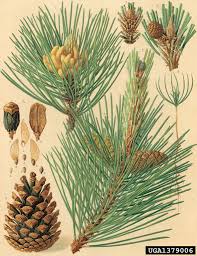
2
New cards
Ephedraceae
Shrubs or woody vines
Dioecious
Leaves dry, scale-like, opposite, whorled
Stems with elongated internodes, green, photosynthetic, grooved
Compound strobili, stalked clusters of anther-like pollen sacs and ovules 1-2
Dioecious
Leaves dry, scale-like, opposite, whorled
Stems with elongated internodes, green, photosynthetic, grooved
Compound strobili, stalked clusters of anther-like pollen sacs and ovules 1-2
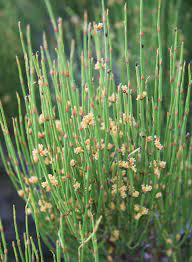
3
New cards
Cupressaceae
Trees and shrubs, evergreen or deciduous
Includes redwoods, junipers, and cedar
Monoecious or dioecious
Leaves scale- or needle-like (never in fascicles)
Male cones >2 sacs per cone scale
Female cones woody or fleshy, scales peltate (soccer ball-like)
Includes redwoods, junipers, and cedar
Monoecious or dioecious
Leaves scale- or needle-like (never in fascicles)
Male cones >2 sacs per cone scale
Female cones woody or fleshy, scales peltate (soccer ball-like)
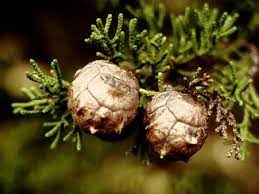
4
New cards
Cycadaceae (cycad family)
Palm-like, erect/subterranean trunks
Evergreen pinnately compound leaves, often with circinate vernation
Dioecious
Massive pollen-producing strobili
Megasporophylls in strobili-like terminal bud with many fan-shaped blades with multiple ovules on margins of petiole
Evergreen pinnately compound leaves, often with circinate vernation
Dioecious
Massive pollen-producing strobili
Megasporophylls in strobili-like terminal bud with many fan-shaped blades with multiple ovules on margins of petiole
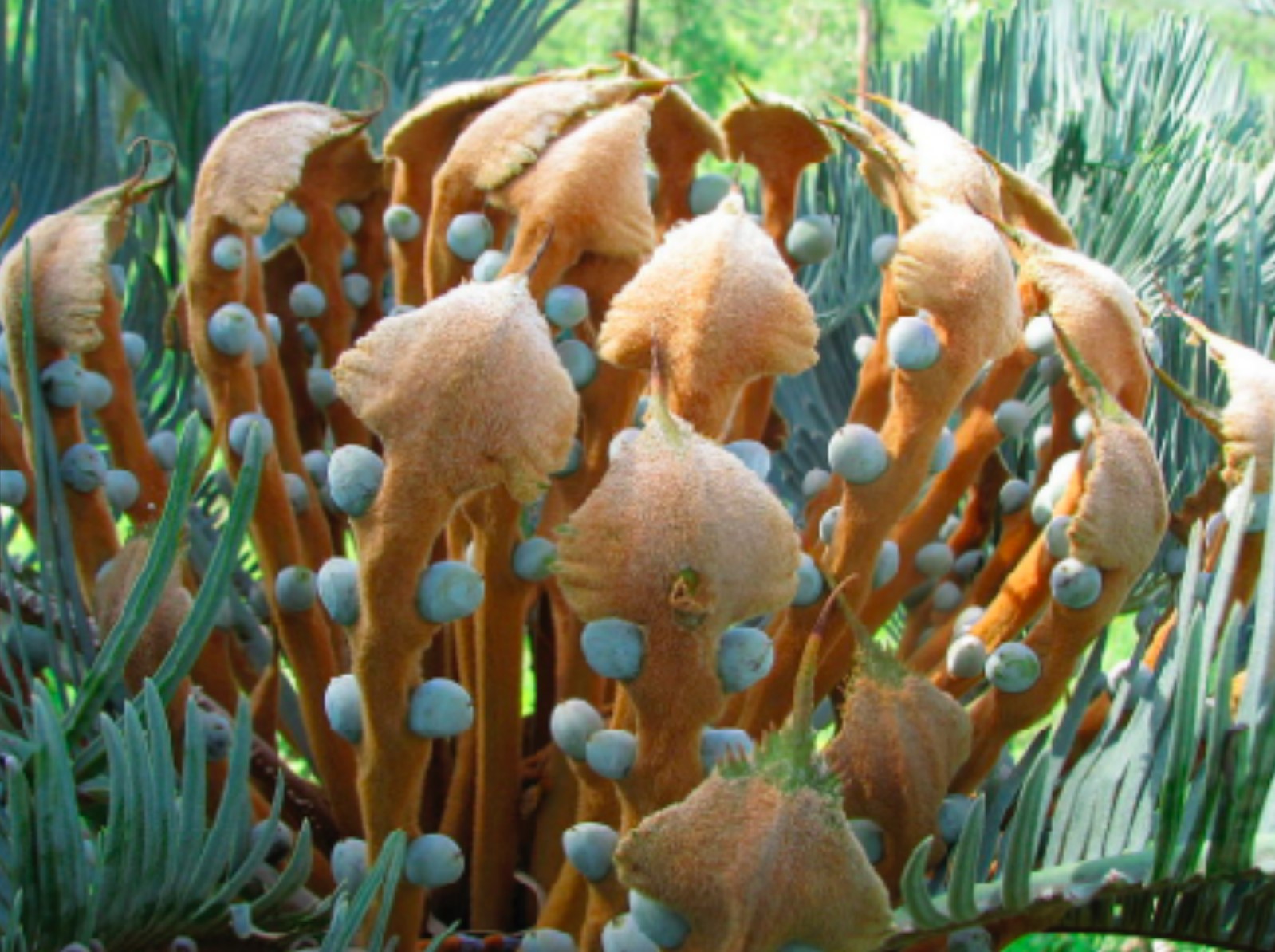
5
New cards
Zamiaceae (coontie family)
Palm-like, erect/subterranean trunks
Evergreen pinnately compound leaves, often with circinate vernation
Dioecious
Massive pollen-producing strobili
Megasporophyll produced in strobili by lateral buds, blades reduced to scales, each with two ovules
Evergreen pinnately compound leaves, often with circinate vernation
Dioecious
Massive pollen-producing strobili
Megasporophyll produced in strobili by lateral buds, blades reduced to scales, each with two ovules
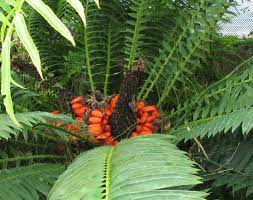
6
New cards
Ginkgoaceae
Branches with long and short shoots
Fan-shaped, deciduous leaves
Dichotomous venation
Fleshy, plum-like seeds
Fan-shaped, deciduous leaves
Dichotomous venation
Fleshy, plum-like seeds
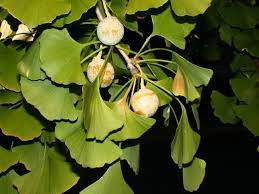
7
New cards
Ancestral vs derived trends in floral evolution
Parts ∞ vs parts fewer
No elaboration vs elaborate/derived
Parts free (not fused) vs parts often fused
Radial symmetry vs bilateral/biradial symmetry
No elaboration vs elaborate/derived
Parts free (not fused) vs parts often fused
Radial symmetry vs bilateral/biradial symmetry
8
New cards
Amborellales
1 family, 1 genus, 1 species ((Amborella trichopoda)
Basal angiosperm only in New Caledonia
Sister to all other angiosperms
Basal angiosperm only in New Caledonia
Sister to all other angiosperms
9
New cards
Magnoliaceae
Magnoliid
Woody trees or shrubs
∞-merous
Ring of scars around nodes from fallen tepals
Superior ovary
Stamens are laminar (filament blends into anther)
Fruit type: aggregate of follicle, samara, and berry
Woody trees or shrubs
∞-merous
Ring of scars around nodes from fallen tepals
Superior ovary
Stamens are laminar (filament blends into anther)
Fruit type: aggregate of follicle, samara, and berry
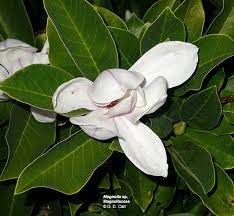
10
New cards
Lauraceae
Magnoliid
Tree or shrub (rarely parasitic vine)
Aromatic oil glands
Leaves simple, alternate (whorled or opposite), evergreen
Flowers small, bi- or uni-sexual, radial with undifferentiated perianth
3-12 stamens, 2-4 anthers
Single, superior ovary
Pollen escapes through valves in the anthers
\
Tree or shrub (rarely parasitic vine)
Aromatic oil glands
Leaves simple, alternate (whorled or opposite), evergreen
Flowers small, bi- or uni-sexual, radial with undifferentiated perianth
3-12 stamens, 2-4 anthers
Single, superior ovary
Pollen escapes through valves in the anthers
\
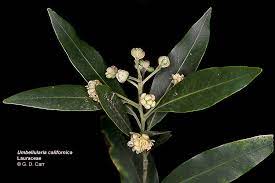
11
New cards
Monocot characteristic features
(usually)
Fibrous roots
Scattered vascular bundles
No cambium
Parallel leaf venation
3-merous
Fibrous roots
Scattered vascular bundles
No cambium
Parallel leaf venation
3-merous
12
New cards
Araceae
Aquatic or terrestrial herbs or shrubs
Inflorescence is a spadix: dense, fleshy spike subtended by a spathe (basally sheathing petaloid bract)
Bi- or uni-sexual sessile, radial flowers with 4-6 (or absent) fleshy tepals and 1-8 stamens
Superior ovary
Fruit type: berry
Record for largest unbranched inflorescence
Most leaves do not have parallel venation (reversal)
Inflorescence is a spadix: dense, fleshy spike subtended by a spathe (basally sheathing petaloid bract)
Bi- or uni-sexual sessile, radial flowers with 4-6 (or absent) fleshy tepals and 1-8 stamens
Superior ovary
Fruit type: berry
Record for largest unbranched inflorescence
Most leaves do not have parallel venation (reversal)
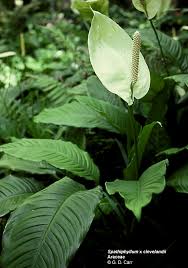
13
New cards
Liliaceae
Perennial herbs from bulbs and rhizomes
Leaves alternate or whorled, sessile with sheathing base, simple
Perianth 3-merous, sepals and petals differentiated or tepals in two whorls
3 connate carpels
Superior ovary
Fruit type: capsule or berry
Leaves alternate or whorled, sessile with sheathing base, simple
Perianth 3-merous, sepals and petals differentiated or tepals in two whorls
3 connate carpels
Superior ovary
Fruit type: capsule or berry
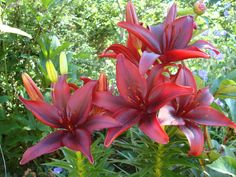
14
New cards
Iridaceae
Herbs with underground stems (rhizomes, bulbs, corms)
Leaves simple, mostly linear and basal, 2-ranked and equitant (vertically folded with upper surface hidden and fused)
Flowers bisexual, radial or bilateral, 3 sepals and 3 petals or 6 tepals, 3 stamens
Inferior ovary
Fruit type: loculicidal capsule
Leaves simple, mostly linear and basal, 2-ranked and equitant (vertically folded with upper surface hidden and fused)
Flowers bisexual, radial or bilateral, 3 sepals and 3 petals or 6 tepals, 3 stamens
Inferior ovary
Fruit type: loculicidal capsule
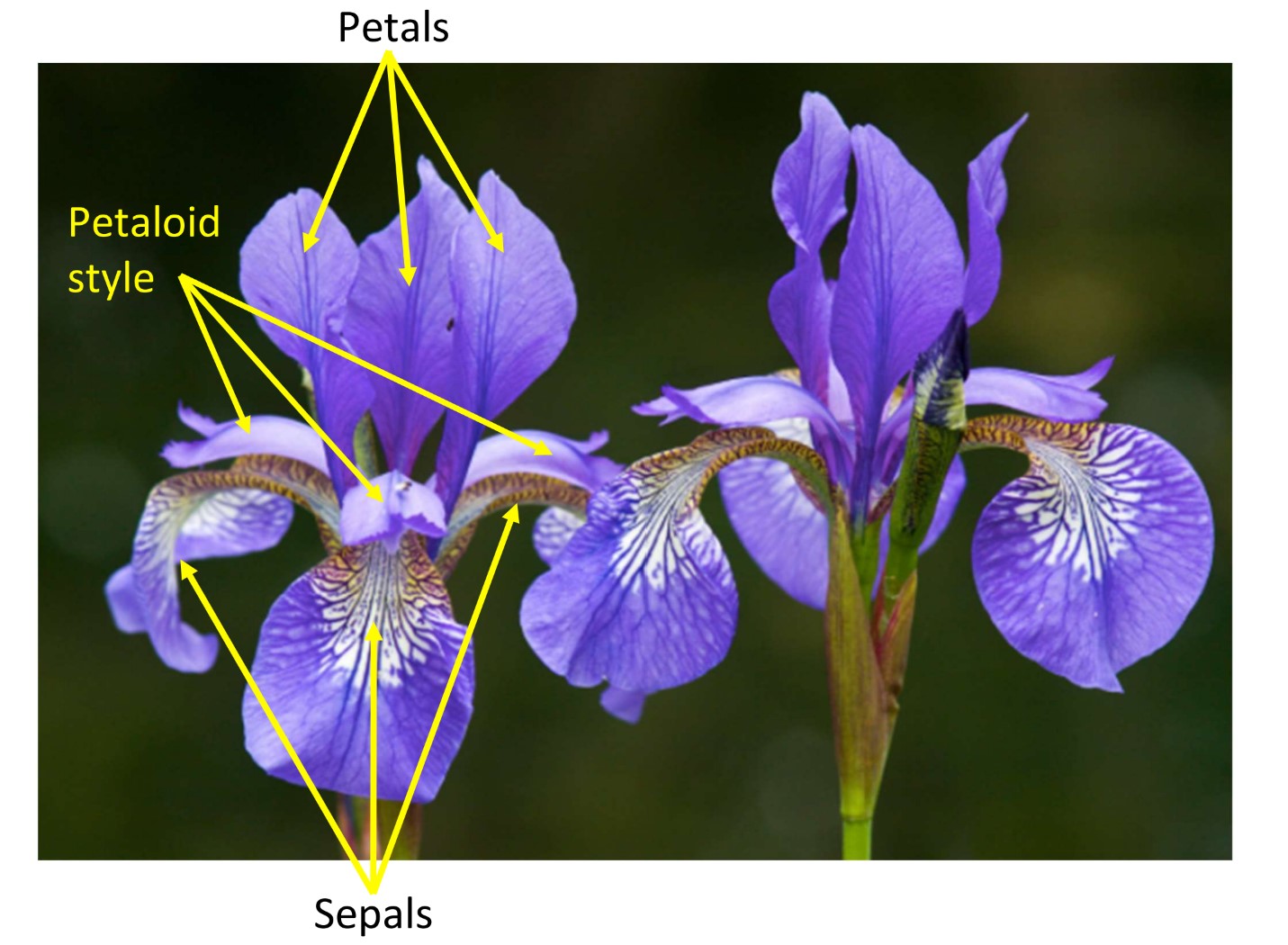
15
New cards
Arecaceae (palm family)
Perennial trees, occasionally shrubs or lianas
Secondary growth is absent
Monopodial growth
Leaves pinnate (Feather Palms) or palmately (Fan Palms) compound or lobed, blades large and plicate (folded), petiole elongate and stout (maybe with armament), base sheathing
May have crown shaft (overlapping leaf bases)
Inflorescence axillary (terminal), bracteate (peduncle subtended by a large bract)
Flowers bi- or uni-sexual, perianth 3-merous, 3 carpels
Superior ovary
Fruit type: drupe or berry, usually 1 seed per fruit
Secondary growth is absent
Monopodial growth
Leaves pinnate (Feather Palms) or palmately (Fan Palms) compound or lobed, blades large and plicate (folded), petiole elongate and stout (maybe with armament), base sheathing
May have crown shaft (overlapping leaf bases)
Inflorescence axillary (terminal), bracteate (peduncle subtended by a large bract)
Flowers bi- or uni-sexual, perianth 3-merous, 3 carpels
Superior ovary
Fruit type: drupe or berry, usually 1 seed per fruit
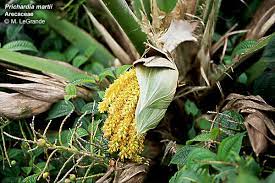
16
New cards
Juncaceae (rush family)
In Poales
“Rushes are round”
Annual or perennial herbs
Mostly wetland habitats
Stems mostly cylindrical
Leaves basally sheathing, mostly basal, sometimes cauline, blades linear, cylindric, or reduced to blade-less sheaths (equitant)
Perianth 3-merous with 6 tepals
3 or 6 stamens, 3 connate carpels with long stigmas
Fruit type: capsule
“Rushes are round”
Annual or perennial herbs
Mostly wetland habitats
Stems mostly cylindrical
Leaves basally sheathing, mostly basal, sometimes cauline, blades linear, cylindric, or reduced to blade-less sheaths (equitant)
Perianth 3-merous with 6 tepals
3 or 6 stamens, 3 connate carpels with long stigmas
Fruit type: capsule
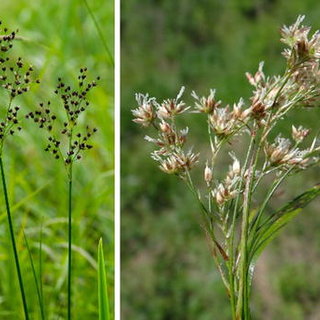
17
New cards
Cyperaceae (sedge family)
In Poales
“Sedges have edges”
Annual or perennial herbs
Mostly wetland habitats
Stems usually triangular
Leaves basal or cauline, typically 3-ranked, blades linear, triangular, or reduced to bladeless sheaths
Inflorescence of one to many spikelets, each consisting of a central axis with overlapping, scale-like bracts; flowers borne in the axils of the bracts
Perianth is bristles or absent, 3 stamens, 1 pistil, 2 (biconvex, 2 stigmas) or 3 (triangular, 3 stigmas) connate carpels with 1 locule and 1 ovule
Fruit type: achene
Carex is the largest genus in CA
“Sedges have edges”
Annual or perennial herbs
Mostly wetland habitats
Stems usually triangular
Leaves basal or cauline, typically 3-ranked, blades linear, triangular, or reduced to bladeless sheaths
Inflorescence of one to many spikelets, each consisting of a central axis with overlapping, scale-like bracts; flowers borne in the axils of the bracts
Perianth is bristles or absent, 3 stamens, 1 pistil, 2 (biconvex, 2 stigmas) or 3 (triangular, 3 stigmas) connate carpels with 1 locule and 1 ovule
Fruit type: achene
Carex is the largest genus in CA
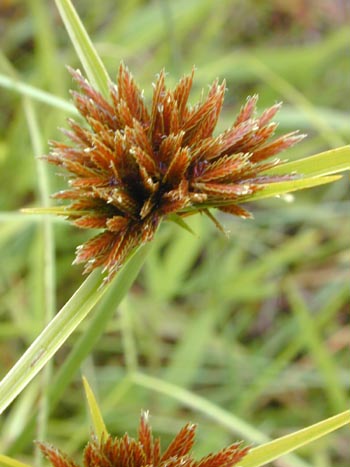
18
New cards
Carex
In Cyperaceae
Largest genus in CA
Imperfect flowers
Monoecious or dioecious
Staminate flowers with 3 stamens
Pistillate flowers with a perigynium and a second, scale-like bract
Largest genus in CA
Imperfect flowers
Monoecious or dioecious
Staminate flowers with 3 stamens
Pistillate flowers with a perigynium and a second, scale-like bract
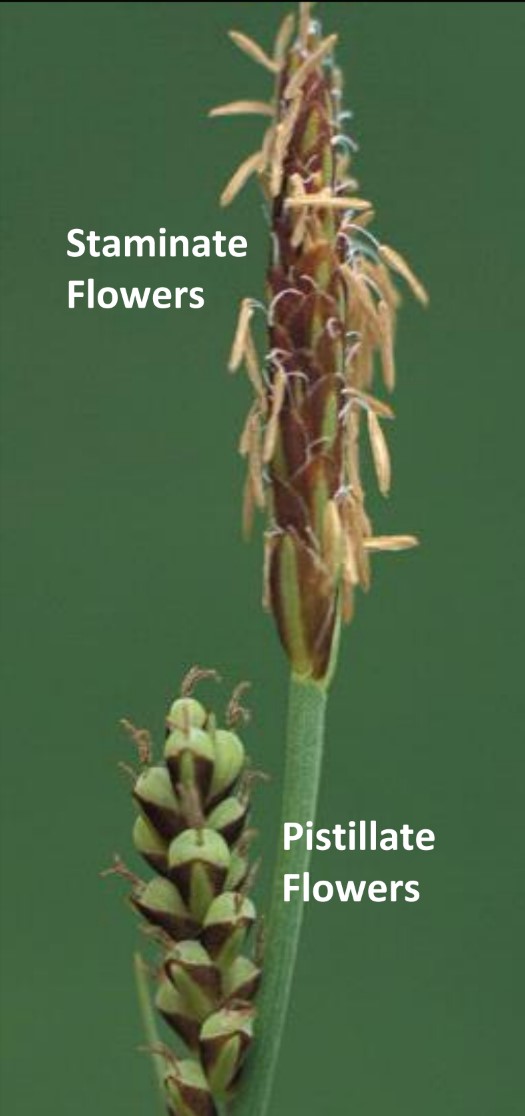
19
New cards
Fleshy fruits
Berry (Pepo and Hespiridium), Pome, Drupe
20
New cards
Berry
1 pistil
Fleshy pericarp
1-many seeds
E.g.: blueberry, banana, tomato, pepper
Fleshy pericarp
1-many seeds
E.g.: blueberry, banana, tomato, pepper
21
New cards
Pepo
Type of berry
1 pistil
Fleshy pericarp
Leathery/thick exocarp
Often many seeds
Parietal placentation
E.g.: Cucurbitaceae (cucumber, zucchini, cantaloupe)
1 pistil
Fleshy pericarp
Leathery/thick exocarp
Often many seeds
Parietal placentation
E.g.: Cucurbitaceae (cucumber, zucchini, cantaloupe)
22
New cards
Hespiridium
Type of berry
1 pistil
Fleshy pericarp
Leathery/thick exocarp with volatile compounds
Many seeds
1 ovary/locule per section
Modified trichomes on inner wall of ovary
E.g.: Rutaceae (citrus)
1 pistil
Fleshy pericarp
Leathery/thick exocarp with volatile compounds
Many seeds
1 ovary/locule per section
Modified trichomes on inner wall of ovary
E.g.: Rutaceae (citrus)
23
New cards
Pome
1 pistil
Fleshy hypanthium (accessory tissue)
Cartilaginous endocarp
Usually 5 seeds
Inferior placentation
E.g.: apple
Fleshy hypanthium (accessory tissue)
Cartilaginous endocarp
Usually 5 seeds
Inferior placentation
E.g.: apple
24
New cards
Drupe
1 pistil
Fleshy mesocarp
Stony/hard endocarp
1 seed
E.g.: coconut, mango
Fleshy mesocarp
Stony/hard endocarp
1 seed
E.g.: coconut, mango
25
New cards
Dry fruits
Dehiscent and Indehiscent fruits
26
New cards
Dehiscent fruits
Split open to release seeds
Split into mericarps (1-carpellate segments)
Legumes
Follicles
Capsules
Split into mericarps (1-carpellate segments)
Legumes
Follicles
Capsules
27
New cards
Legume
Dry, dehiscent fruit
1 pistil
1 carpel
Dry at maturity
Dehisces along 2 sutures
E.g.: Fabaceae
1 pistil
1 carpel
Dry at maturity
Dehisces along 2 sutures
E.g.: Fabaceae

28
New cards
Follicle
Dry, dehiscent fruit
1 pistil
1 carpel
Dry at maturity
Dehisces along 1 suture
Apocarpus gynoecia can mature into >1 follicle from 1
1 pistil
1 carpel
Dry at maturity
Dehisces along 1 suture
Apocarpus gynoecia can mature into >1 follicle from 1
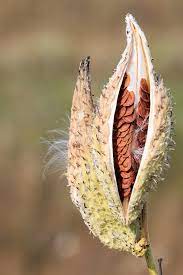
29
New cards
Capsule
Dry, dehiscent fruit
1 compound pistil
Usually dry at maturity
Dehisces into valves (loculicidal, septicidal, circumscissile)
1 compound pistil
Usually dry at maturity
Dehisces into valves (loculicidal, septicidal, circumscissile)

30
New cards
Indehiscent fruit
Dry fruits
Achene
Nuts
Caryopsis
Utricle
Samara
Schizocarp
Nutlet
Achene
Nuts
Caryopsis
Utricle
Samara
Schizocarp
Nutlet
31
New cards
Achene
Dry, indehiscent fruit
1 pistil
1 seed
Dry at maturity
Seed attached to pericarp at 1 point
Pericarp usually thin
1 pistil
1 seed
Dry at maturity
Seed attached to pericarp at 1 point
Pericarp usually thin
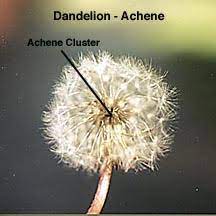
32
New cards
Nut
Dry, indehiscent fruit
1 pistil
1 seed
Dry at maturity
Seed attached to pericarp at 1 point
Pericarp hard and stony
1 pistil
1 seed
Dry at maturity
Seed attached to pericarp at 1 point
Pericarp hard and stony
33
New cards
Caryopsis
Dry, indehiscent fruit
1 pistil
Usually 1 seed
Dry at maturity
Seed coat adnate to pericarp
E.g.: Poaceae
1 pistil
Usually 1 seed
Dry at maturity
Seed coat adnate to pericarp
E.g.: Poaceae
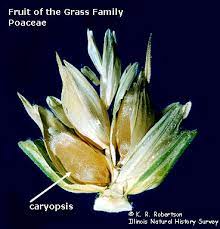
34
New cards
Utricle
Dry, indehiscent fruit
1 pistil
1 seed
Dry at maturity
Seed attached to pericarp at 1 point
Pericarp thin and papery, inflated, “bowling ball in a plastic bag”
1 pistil
1 seed
Dry at maturity
Seed attached to pericarp at 1 point
Pericarp thin and papery, inflated, “bowling ball in a plastic bag”
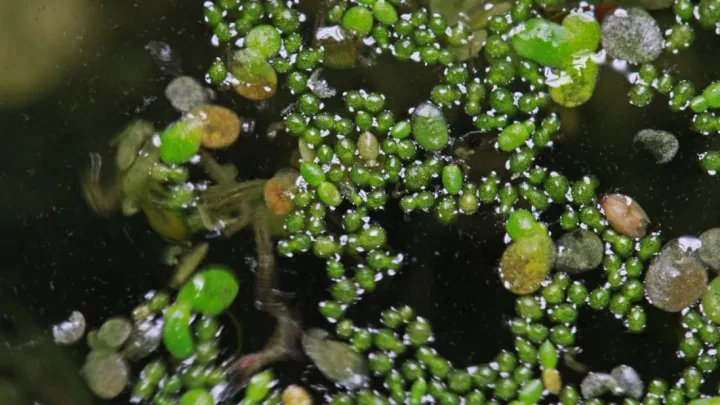
35
New cards
Samara
Dry, indehiscent fruit
1 pistil
Dry at maturity
Pericarp thin and papery, winged
1 pistil
Dry at maturity
Pericarp thin and papery, winged
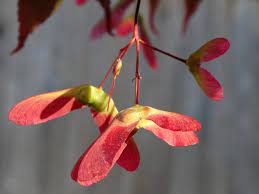
36
New cards
Schizocarp
Dry, indehiscent fruit
1 compound pistil
Each carpel and pistil separates into own fruitlet called “mericarp”
1 compound pistil
Each carpel and pistil separates into own fruitlet called “mericarp”

37
New cards
Nutlet
Dry, indehiscent fruit
1 pistil
1 seed
Each carpel and pistil separates into own fruitlet called “mericarp”
E.g.: Lamiaceae, Verbenaceae, many Boraginaceae
1 pistil
1 seed
Each carpel and pistil separates into own fruitlet called “mericarp”
E.g.: Lamiaceae, Verbenaceae, many Boraginaceae

38
New cards
Synapomorphies of vascular plants
Roots
Endodermis
Sieve elements (phloem) and tracheary cells (xylem)
Lignin
Alternation of generations
Endodermis
Sieve elements (phloem) and tracheary cells (xylem)
Lignin
Alternation of generations
39
New cards
Selaginellaceae
Spike-Moss Family
In Lycopodiophyta
Perennial herb, rarely tree-like, no rhizomes
Sporangia produced on sporophylls; Spores of 2 kinds; many microspores per microsporangium; four megaspores per megasporangium.
Lycophylls
In Lycopodiophyta
Perennial herb, rarely tree-like, no rhizomes
Sporangia produced on sporophylls; Spores of 2 kinds; many microspores per microsporangium; four megaspores per megasporangium.
Lycophylls

40
New cards
Monilophytes
Ferns and friends
Have true leaves with a leaf gap
Equisetaceae
Polypodiopsida
Have true leaves with a leaf gap
Equisetaceae
Polypodiopsida
41
New cards
Equisetaceae (horsetail family)
Perennial herb
Stems hollow, ribbed, two ring canals
Leaves reduced to microphylls, whorled and fused
Reproduce by spores in a sporangiophore
Sporangia are homosporous, born in terminal strobili subtended by a whorl of sheathing leaves
Spores with elators
Some have rhizomes with tubers
Some have dimorphic aerial shoots (photosynthetic and nonphotosynthetic shoots)
Stems hollow, ribbed, two ring canals
Leaves reduced to microphylls, whorled and fused
Reproduce by spores in a sporangiophore
Sporangia are homosporous, born in terminal strobili subtended by a whorl of sheathing leaves
Spores with elators
Some have rhizomes with tubers
Some have dimorphic aerial shoots (photosynthetic and nonphotosynthetic shoots)
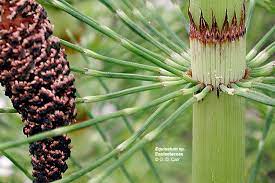
42
New cards
Polypodiopsida
Ferns with leptosporangium (mohawk sporangia)
Rhizome with nodes and fronds/leaves
Circinate vernation
Pteridaceae
Dryopteridaceae
Polypodiaceae
Rhizome with nodes and fronds/leaves
Circinate vernation
Pteridaceae
Dryopteridaceae
Polypodiaceae
43
New cards
Dryopteridaceae (wood fern family)
Leaves usually compound
Petioles NOT wire-like
Sporangia in round, dot-like sori on abaxial leaf face
True indusium
Petioles NOT wire-like
Sporangia in round, dot-like sori on abaxial leaf face
True indusium
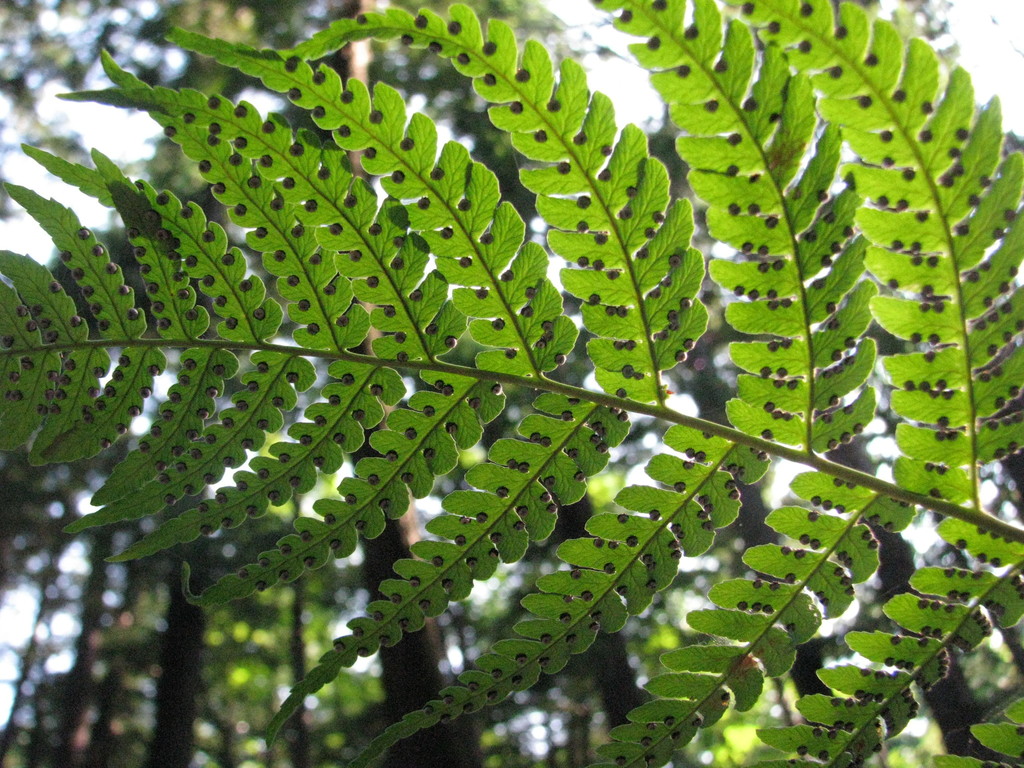
44
New cards
Polypodiaceae:
Leaves, petioles, sporangia location, indusium
Leaves, petioles, sporangia location, indusium
Polypody Family
Leaves simple, often deeply lobed
Petioles NOT wire-like
Sporangia in round, dot-like sori on abaxial face
No indusium
Leaves simple, often deeply lobed
Petioles NOT wire-like
Sporangia in round, dot-like sori on abaxial face
No indusium
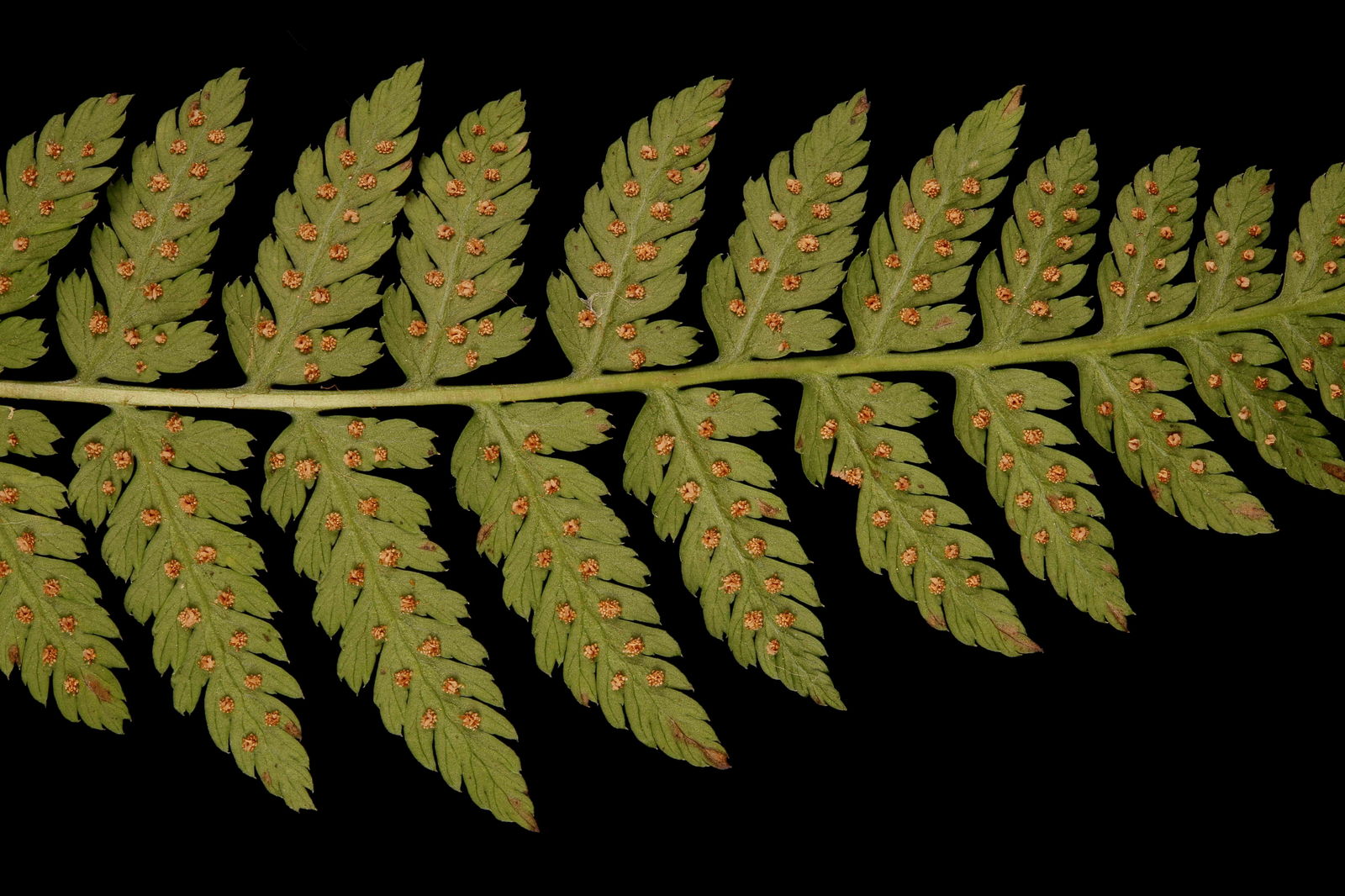
45
New cards
Pteridaceae:
Leaves, petioles, sporangia location, indusium
Leaves, petioles, sporangia location, indusium
Brake/Maidenhair Fern Family
Leaves simple or compound
Petioles wire-like
Sori marginal or sporangia scattered on abaxial face
False or no indusium
Leaves simple or compound
Petioles wire-like
Sori marginal or sporangia scattered on abaxial face
False or no indusium

46
New cards
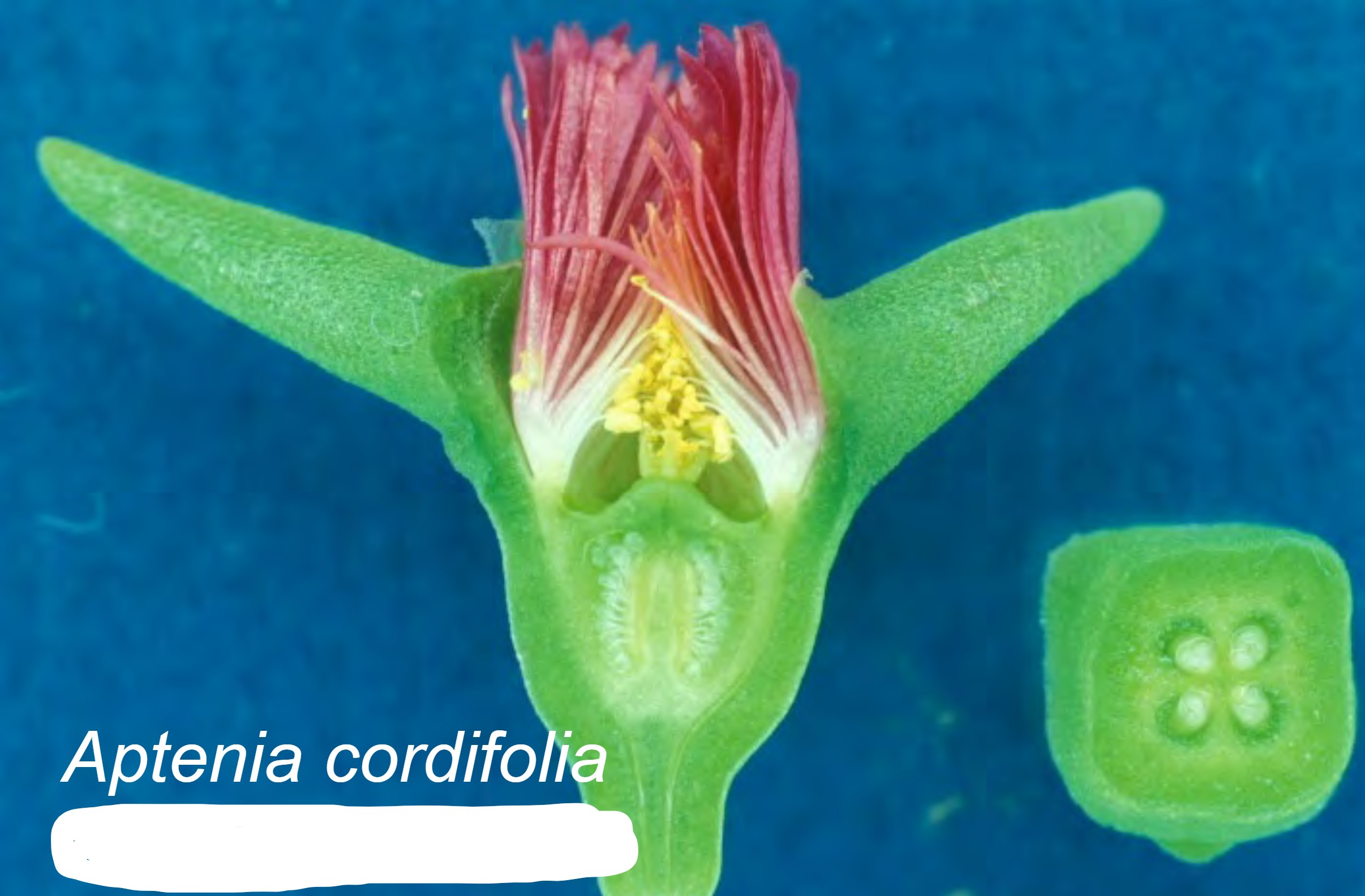
Family?
Aizoaceae
47
New cards
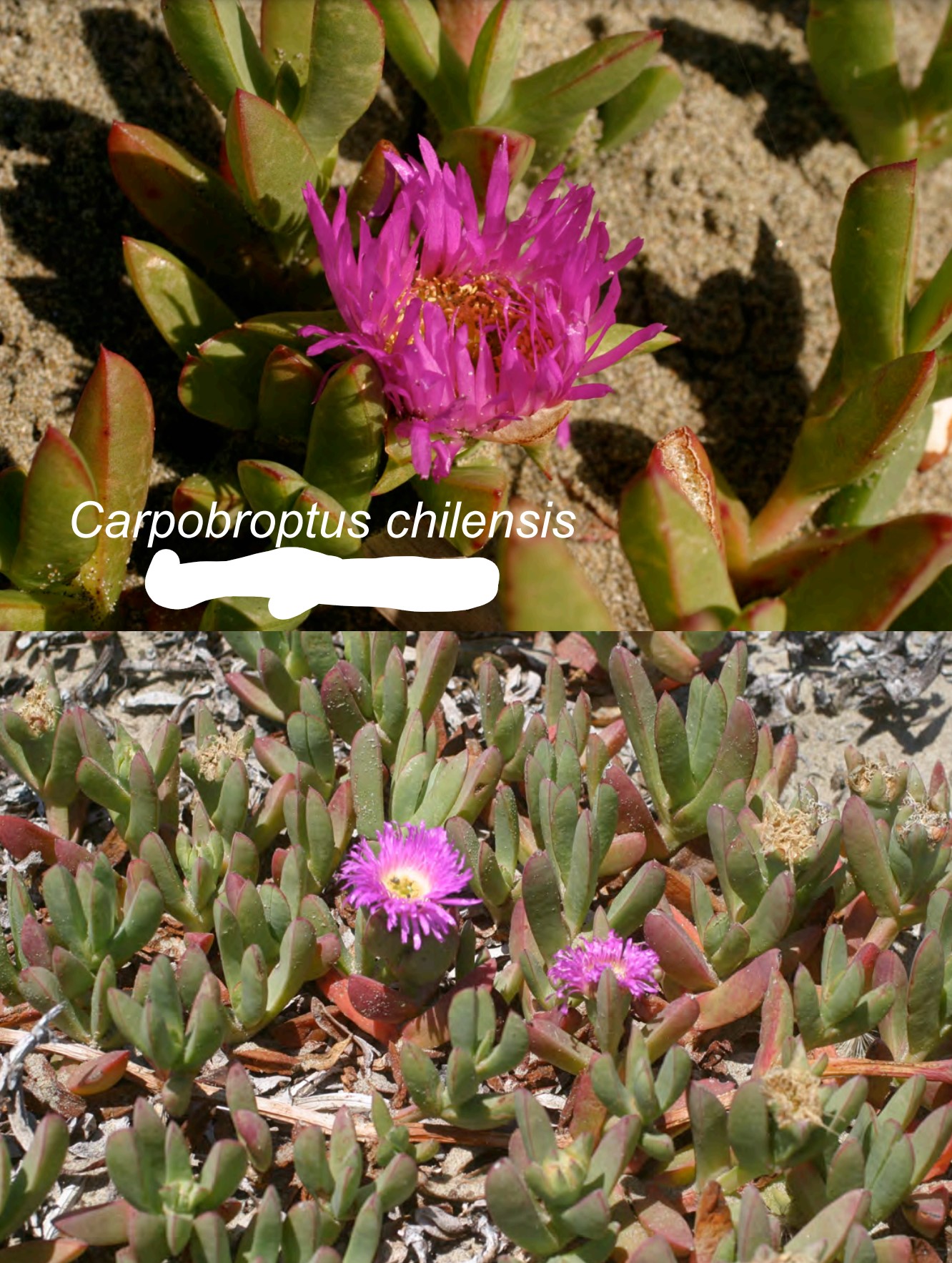
Family?
Aizoaceae
48
New cards
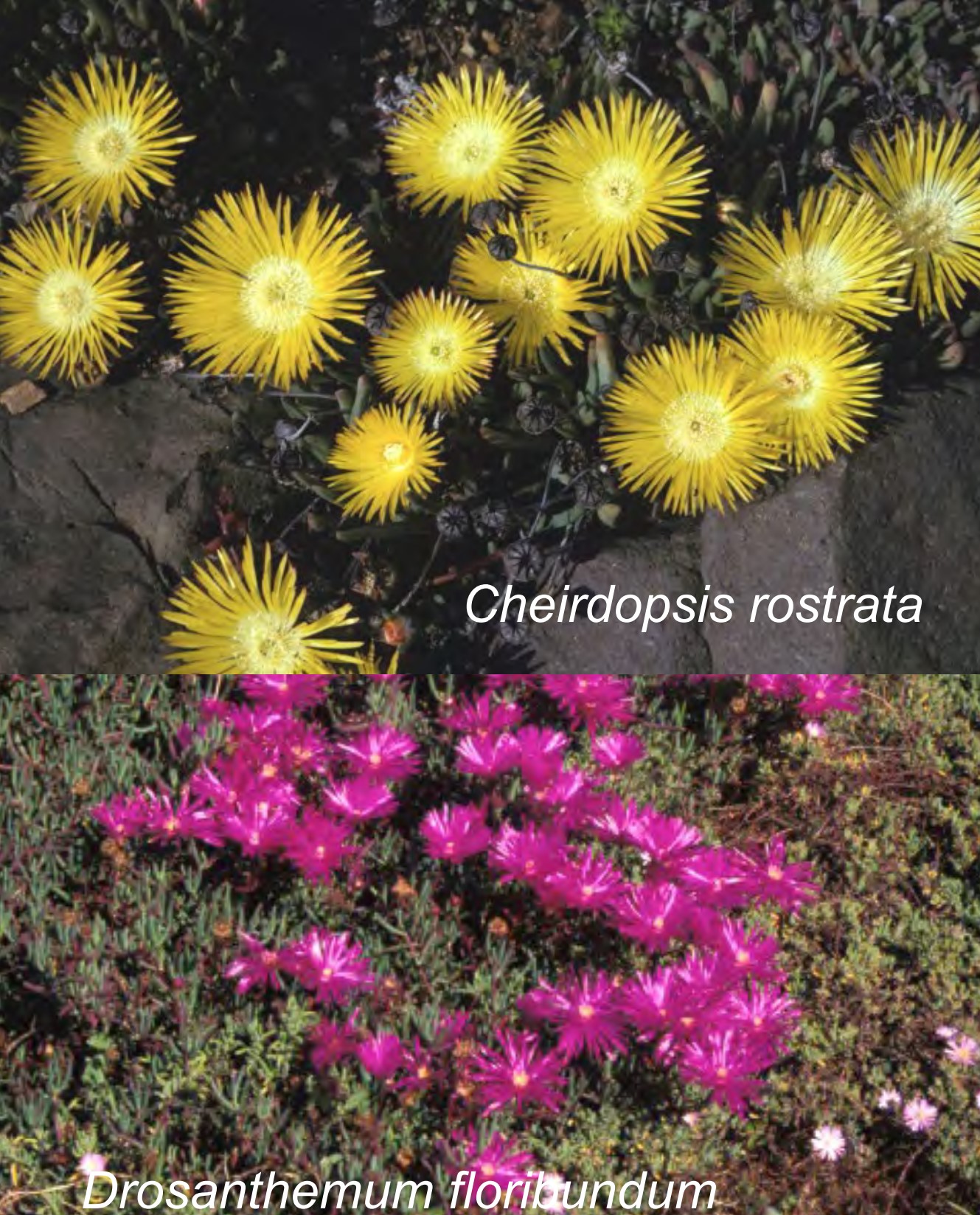
Family?
Aizoaceae
49
New cards
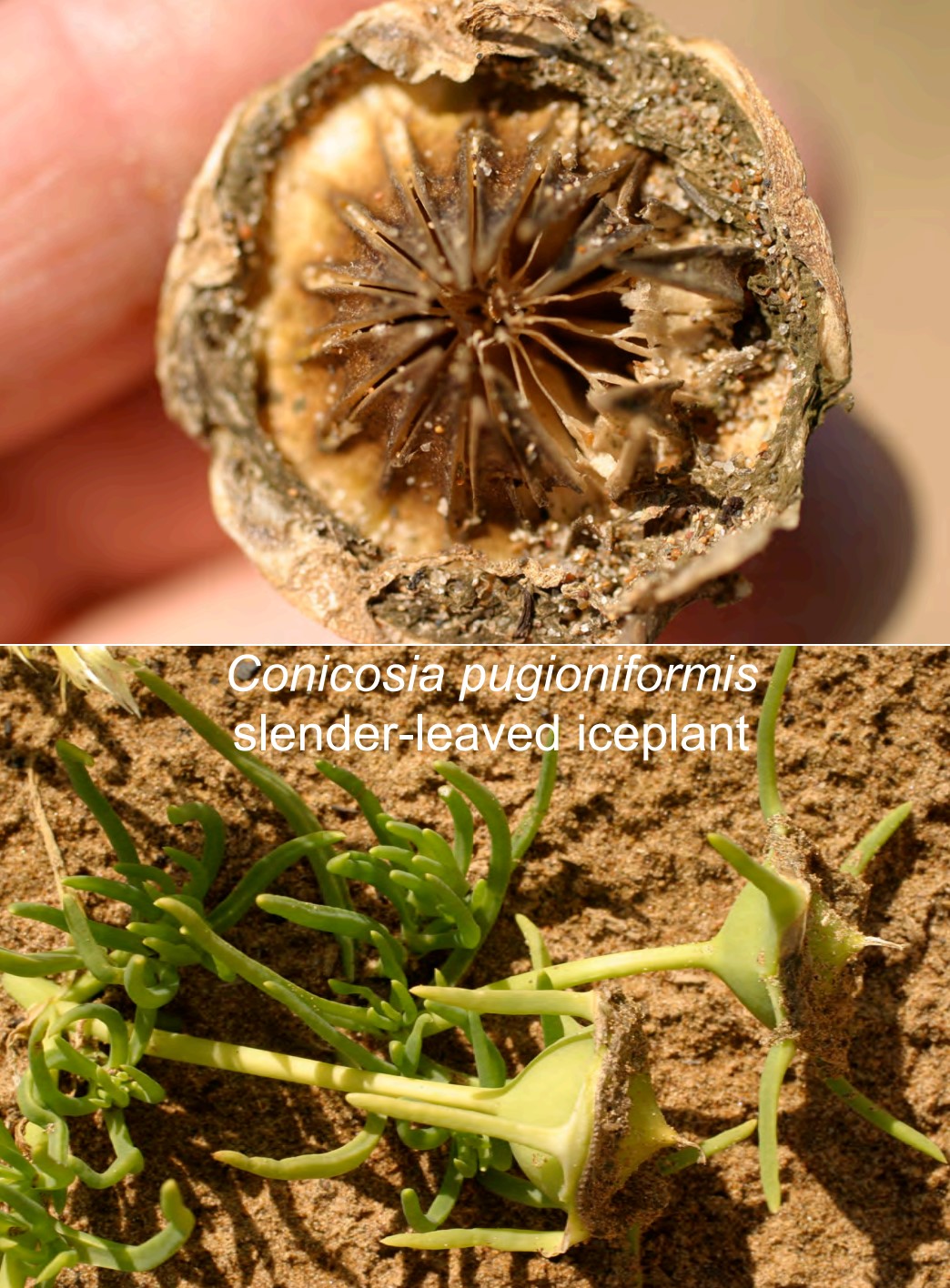
Family? Fruit type?
Aizoaceae, capsule
50
New cards
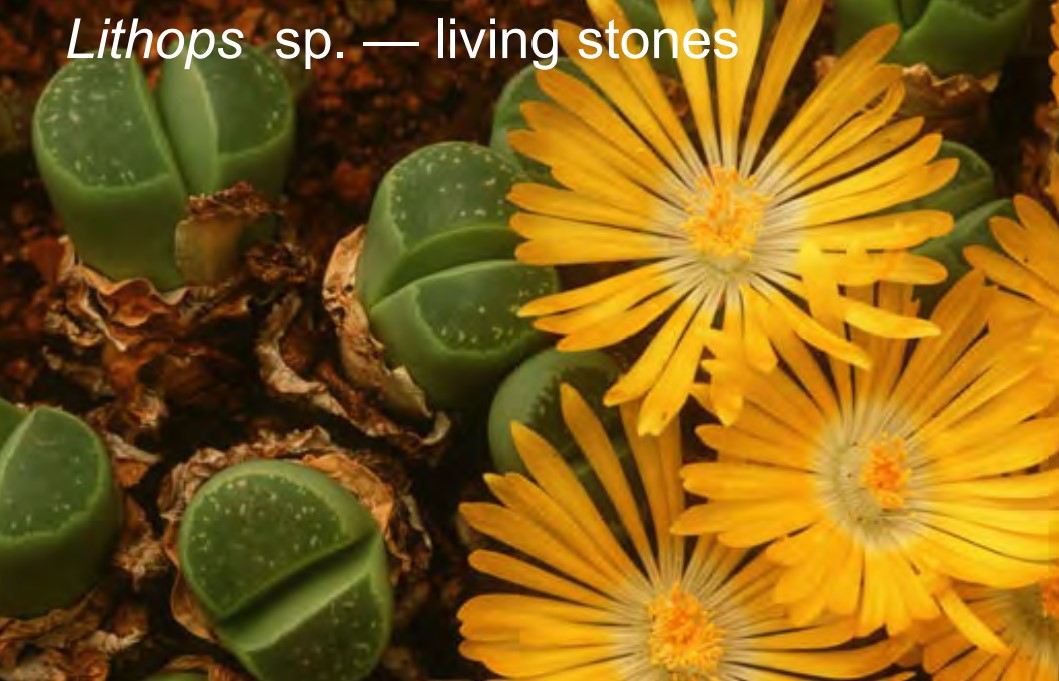
Family?
Aizoaceae
51
New cards
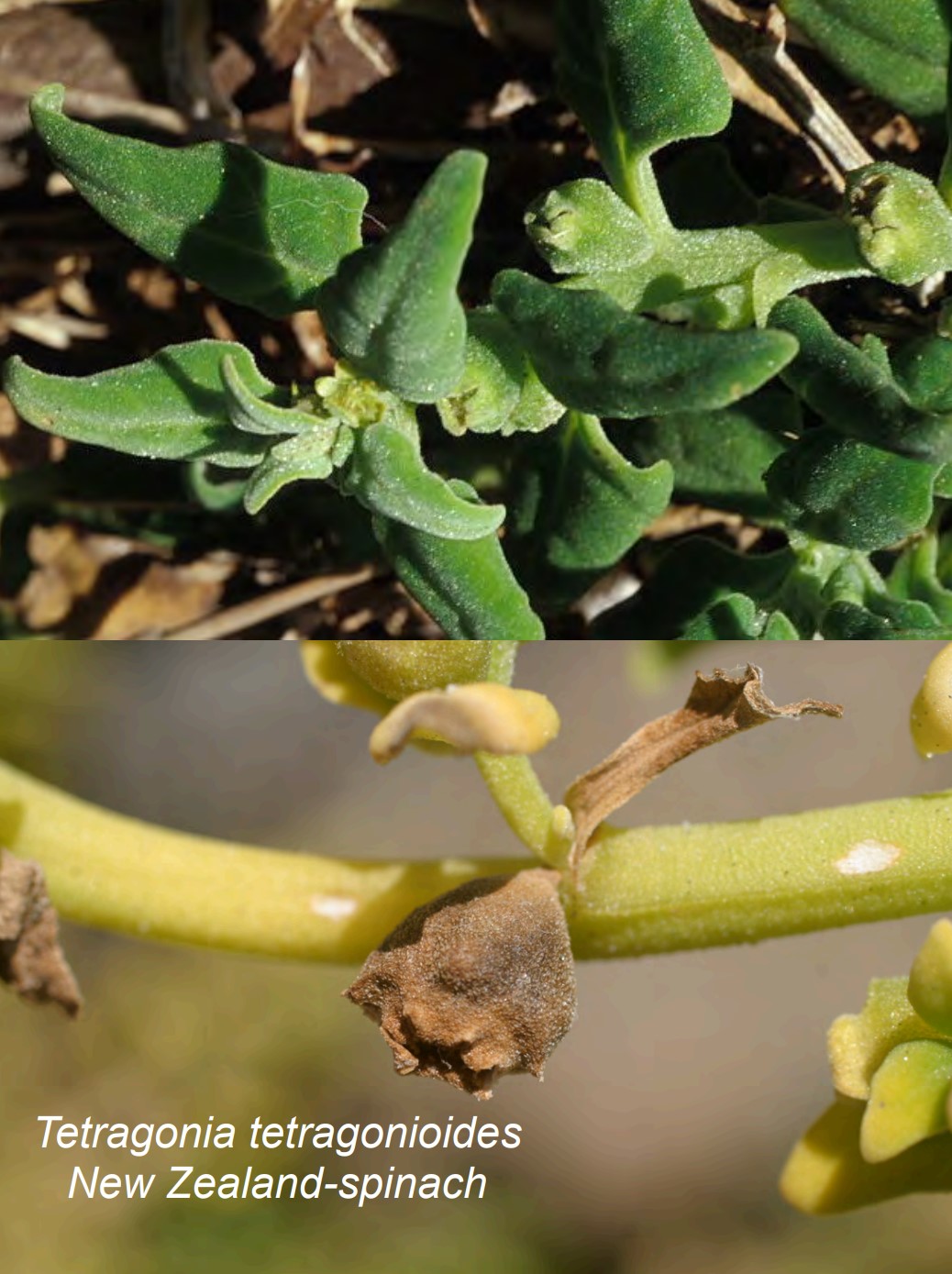
Family?
Aizoaceae
52
New cards
Azioaceae:
Habit, leaves, inflorescence, flowers, perianth, stamens, carpels, fruit, habitat
Habit, leaves, inflorescence, flowers, perianth, stamens, carpels, fruit, habitat
Habit: herbs, subshrubs, generally with succulent leaves
Leaves: opposite, alternate, sometimes in basal rosettes, flat to cylindric or triangular in cross section, usually thick and fleshy, sometimes covered with bead-like papillae; stipules present or more commonly absent
Inflorescence: flowers solitary or in cymes
Flowers: perfect, radial Perianth: sepals (3-) 4–5 (-8), distinct, often thick and fleshy, unequal, sometimes abaxially sepaloid, adaxially petaloid; petals 0 or many, narrow, probably derived from staminodes
Stamens: (3–) many
Carpels: 2–many, connate; styles or sessile stigmas 1 per carpel; locules (1) or 3–many, placentation axile, parietal with septa, rarely basal or free central; ovary superior or partially to wholly inferior
capsule, (berry, indehiscent, nutlike)
Leaves: opposite, alternate, sometimes in basal rosettes, flat to cylindric or triangular in cross section, usually thick and fleshy, sometimes covered with bead-like papillae; stipules present or more commonly absent
Inflorescence: flowers solitary or in cymes
Flowers: perfect, radial Perianth: sepals (3-) 4–5 (-8), distinct, often thick and fleshy, unequal, sometimes abaxially sepaloid, adaxially petaloid; petals 0 or many, narrow, probably derived from staminodes
Stamens: (3–) many
Carpels: 2–many, connate; styles or sessile stigmas 1 per carpel; locules (1) or 3–many, placentation axile, parietal with septa, rarely basal or free central; ovary superior or partially to wholly inferior
capsule, (berry, indehiscent, nutlike)
53
New cards
Araceae:
Habit, leaves, inflorescence, flowers, perianth, stamens, carpels, fruit, habitat
Habit, leaves, inflorescence, flowers, perianth, stamens, carpels, fruit, habitat
Habit: minute to large herbs, "shrubs," or vines, (duckweeds)
Leaves: alternate, all basal, basal and cauline, or all cauline, sessile or usually petioled with sheathing base, simple and entire to deeply lobed or 1 or more times compound. Veins parallel, pinnate, or palmate, finer veins netted or parallel.
Inflorescence in duckweeds reduced to 1 or 2 flowers without bracts, in larger plants a fleshy spike (spadix), usually subtended and often +- enwrapped by a basally sheathing, sepaloid or petaloid bract (spathe).
Flowers perfect or imperfect (plants monoecious or dioecious)
Perianth absent or present; tepals 2–6, often 4, fleshy, not differentiated into sepals and petals;.
Stamens 2–6(–12), often 4, anthers sessile, distinct or connate.
Carpels 1–3(–many), connate; ovary superior or sunken into inflorescence axis; locules 1–3(–many); ovules 1–many; style absent or very short, stigma head-like or flat and disc-like. Fruit a follicle (in duckweeds) or berry, or berries coalescing into multiple fruit.
Leaves: alternate, all basal, basal and cauline, or all cauline, sessile or usually petioled with sheathing base, simple and entire to deeply lobed or 1 or more times compound. Veins parallel, pinnate, or palmate, finer veins netted or parallel.
Inflorescence in duckweeds reduced to 1 or 2 flowers without bracts, in larger plants a fleshy spike (spadix), usually subtended and often +- enwrapped by a basally sheathing, sepaloid or petaloid bract (spathe).
Flowers perfect or imperfect (plants monoecious or dioecious)
Perianth absent or present; tepals 2–6, often 4, fleshy, not differentiated into sepals and petals;.
Stamens 2–6(–12), often 4, anthers sessile, distinct or connate.
Carpels 1–3(–many), connate; ovary superior or sunken into inflorescence axis; locules 1–3(–many); ovules 1–many; style absent or very short, stigma head-like or flat and disc-like. Fruit a follicle (in duckweeds) or berry, or berries coalescing into multiple fruit.
54
New cards

Family?
Araceae
55
New cards
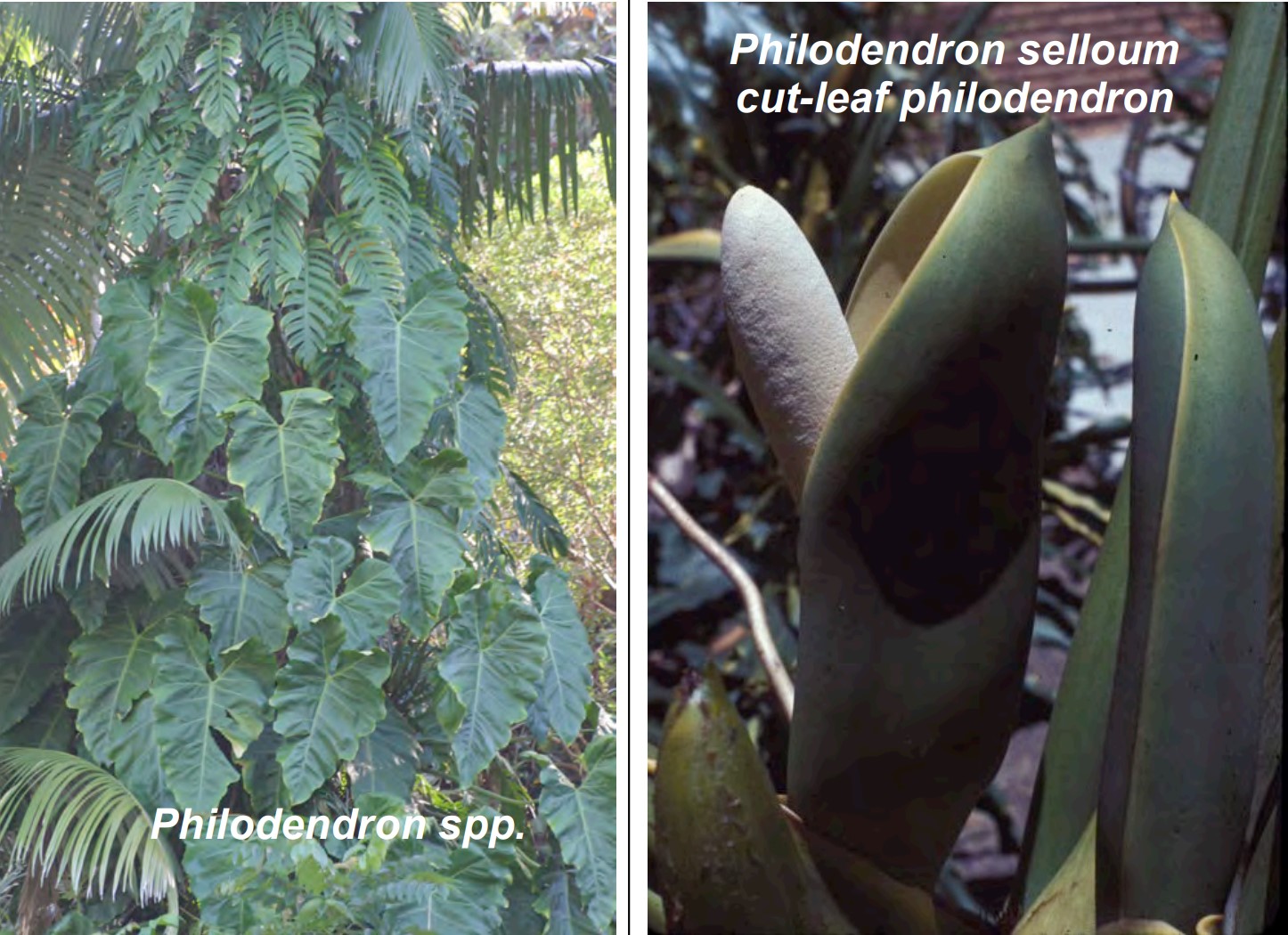
Family?
Araceae
56
New cards

Family?
Araceae (duckweed)
57
New cards
Arecaceae:
Habit, leaves, inflorescence, flowers, perianth, stamens, carpels, fruit
Habit, leaves, inflorescence, flowers, perianth, stamens, carpels, fruit
Palm Family
Habit: trees, shrubs, or woody vines; vascular cambium absent
Leaves large to very large, all cauline, closely alternate, with sheathing bases, long-petioled, simple and entire to ± palmately lobed (fan-palms) or 1–2-pinnate (feather-palms); segments with V-shaped folds.
Inflorescence usually a panicle, often very large and many-flowered, subtended by 1 or more fibrous to woody spathes.
Flowers perfect or imperfect, the plants monoecious, dioecious, synoecious, or with combination of perfect and imperfect flowers.
Perianth usually 3-merous, radial; tepals 6, all sepaloid or all petaloid, distinct or ± connate.
Stamens 6–many; filaments distinct or filaments ± connate, free or ± adnate to perianth.
Carpels 3(–6), ± distinct to wholly connate; ovary superior; placentation marginal or axile; ovules 1 per locule; styles distinct or connate, stigmas 3.
Fruit a drupe or berry (or aggregate of drupes or berries); seeds 1(–3).
Habit: trees, shrubs, or woody vines; vascular cambium absent
Leaves large to very large, all cauline, closely alternate, with sheathing bases, long-petioled, simple and entire to ± palmately lobed (fan-palms) or 1–2-pinnate (feather-palms); segments with V-shaped folds.
Inflorescence usually a panicle, often very large and many-flowered, subtended by 1 or more fibrous to woody spathes.
Flowers perfect or imperfect, the plants monoecious, dioecious, synoecious, or with combination of perfect and imperfect flowers.
Perianth usually 3-merous, radial; tepals 6, all sepaloid or all petaloid, distinct or ± connate.
Stamens 6–many; filaments distinct or filaments ± connate, free or ± adnate to perianth.
Carpels 3(–6), ± distinct to wholly connate; ovary superior; placentation marginal or axile; ovules 1 per locule; styles distinct or connate, stigmas 3.
Fruit a drupe or berry (or aggregate of drupes or berries); seeds 1(–3).
58
New cards

Family? Type?
Aceaceae, feather palm
59
New cards
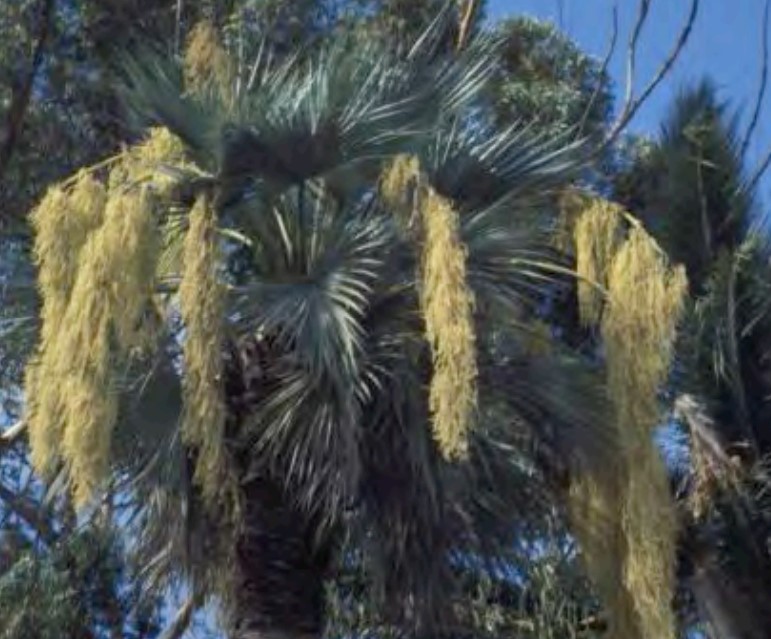
Family? Type?
Areacaceae, fan palm
60
New cards
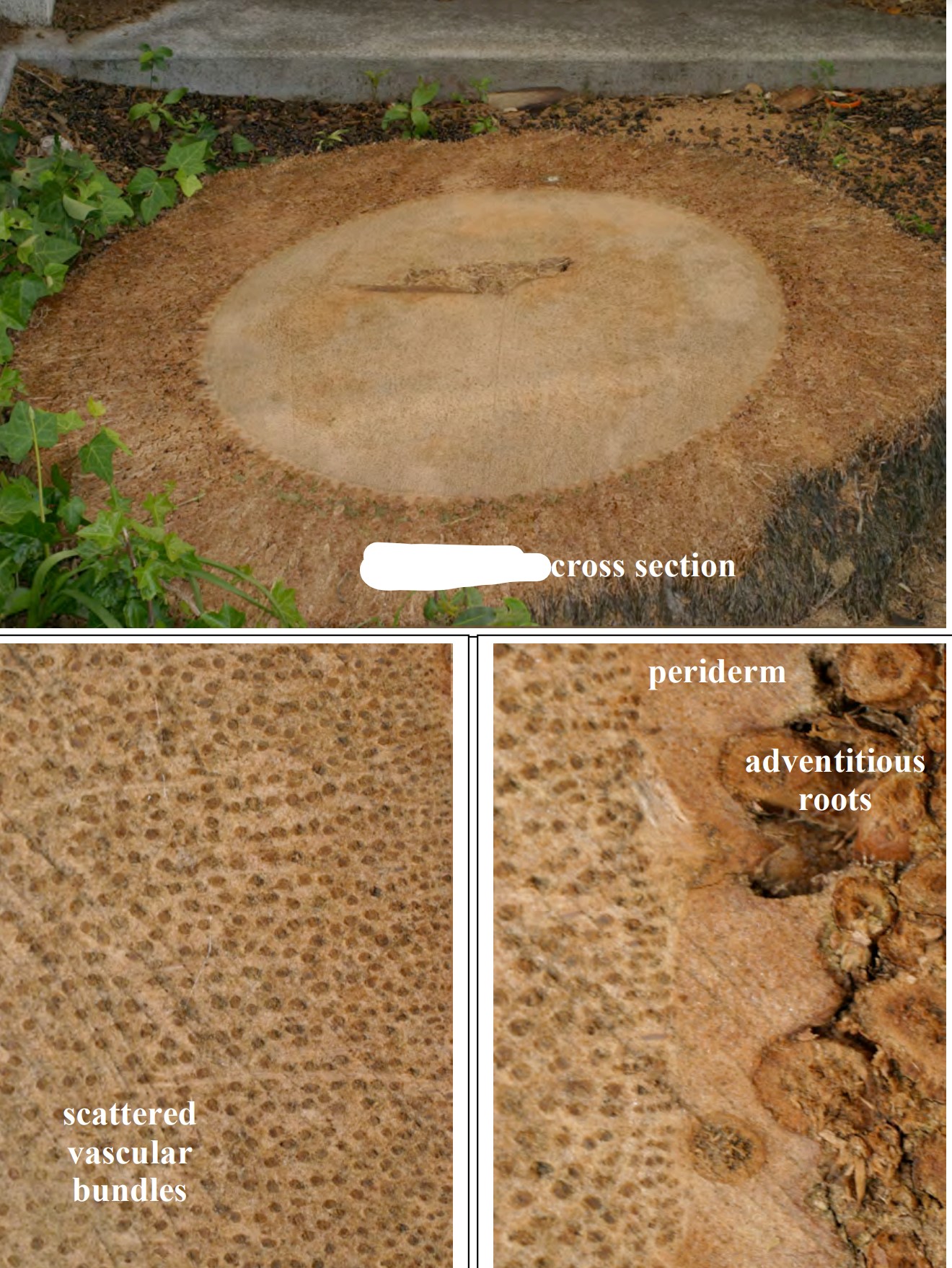
Cross section of what family?
Arecaceae
61
New cards
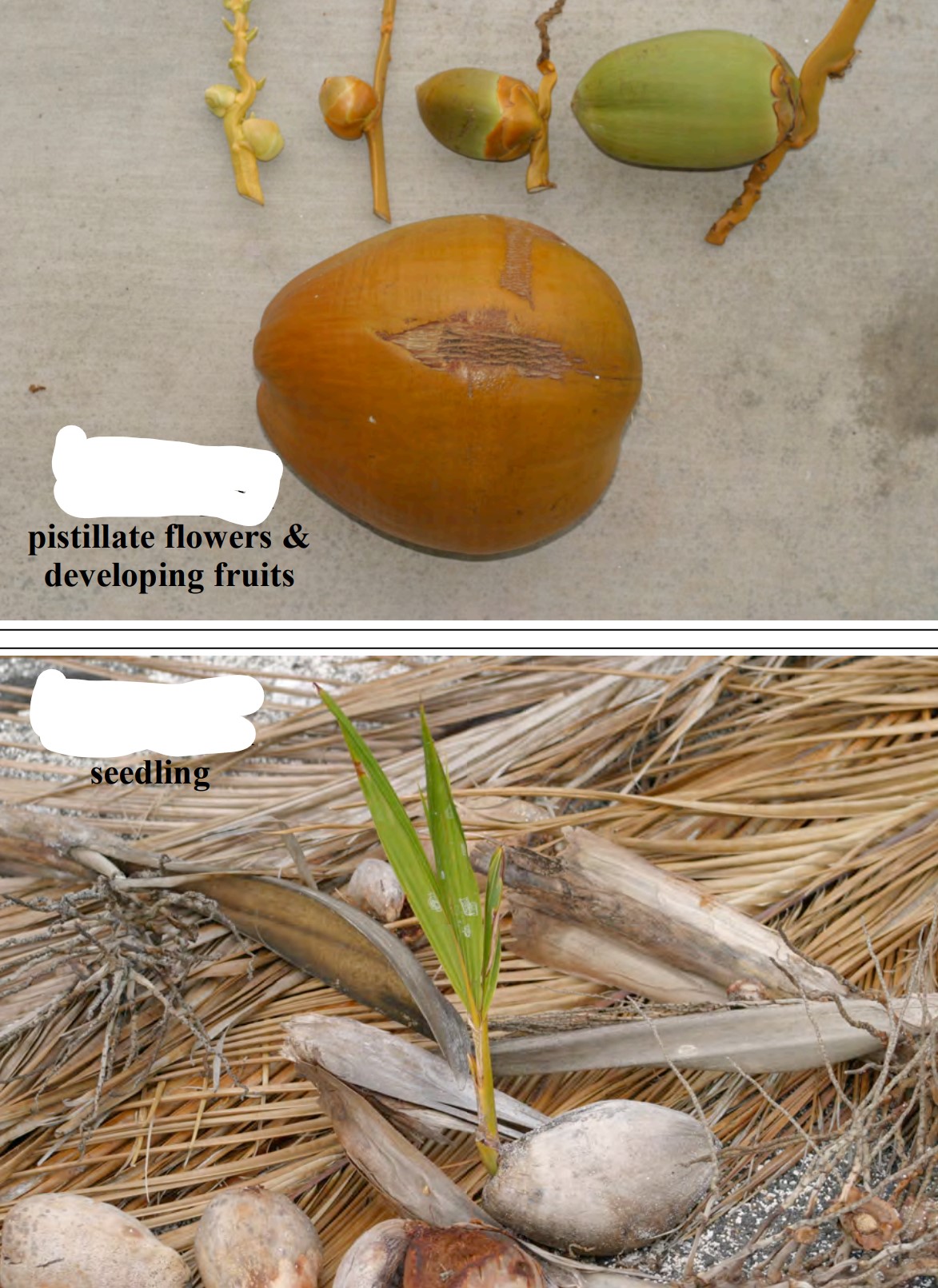
Family?
Arecaceae
62
New cards
Boraginaceae:
Habit, leaves, inflorescence, flowers, perianth, stamens, carpels, fruit
Habit, leaves, inflorescence, flowers, perianth, stamens, carpels, fruit
Borage Family (Boraginaceae and Hydrophyllaceae)
Habit: herbs, shrubs, trees, or root-parasitic herbs (Lennoaceae)
Leaves: alternate or opposite, simple and entire to pinnately 1 or more times lobed, divided, or compound Inflorescence: determinate—cymes, generally scorpioid in alternate-leaved species, sometimes head-like, sometimes in panicle-like secondary clusters
Flowers: perfect
Perianth: 5-merous (most) or 4–10-merous. Sepals distinct or weakly to strongly connate. Petals connate; corolla tubular to funnelform, salverform, or rotate; appendages often present at junction of tube and throat.
Stamens: 5(4–10), alternate with corolla lobes, epipetalous
Carpels: 2, connate; ovary 1–2-loculed with 2--many axile or parietal ovules and terminal style or ovary 4-lobed, 4-loculed with 1 basal-axile ovule per locule and apical or gynobasic style
Fruit: capsule or (1–)4 one-seeded nutlets
Habit: herbs, shrubs, trees, or root-parasitic herbs (Lennoaceae)
Leaves: alternate or opposite, simple and entire to pinnately 1 or more times lobed, divided, or compound Inflorescence: determinate—cymes, generally scorpioid in alternate-leaved species, sometimes head-like, sometimes in panicle-like secondary clusters
Flowers: perfect
Perianth: 5-merous (most) or 4–10-merous. Sepals distinct or weakly to strongly connate. Petals connate; corolla tubular to funnelform, salverform, or rotate; appendages often present at junction of tube and throat.
Stamens: 5(4–10), alternate with corolla lobes, epipetalous
Carpels: 2, connate; ovary 1–2-loculed with 2--many axile or parietal ovules and terminal style or ovary 4-lobed, 4-loculed with 1 basal-axile ovule per locule and apical or gynobasic style
Fruit: capsule or (1–)4 one-seeded nutlets
63
New cards
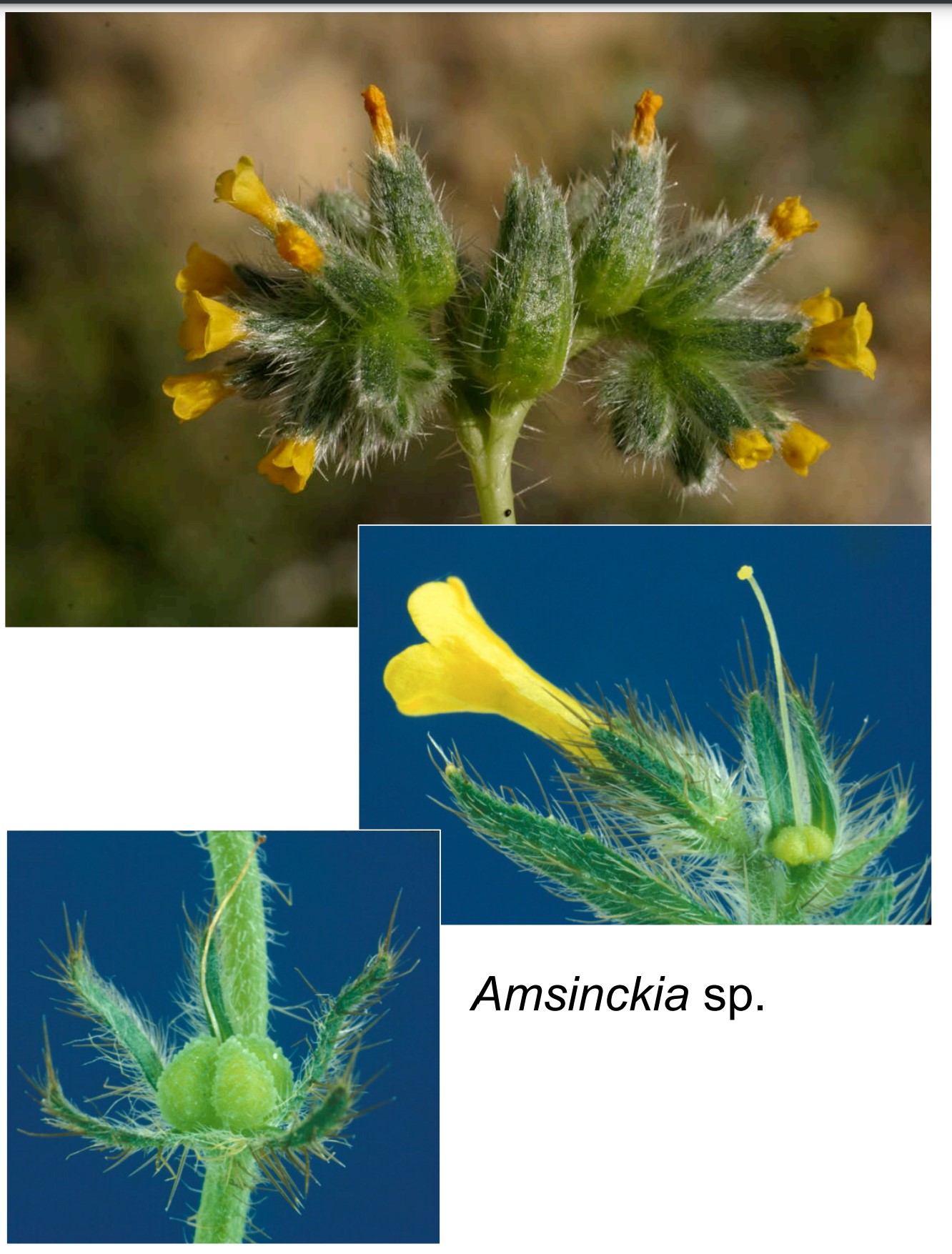
Family?
Boraginaceae
64
New cards
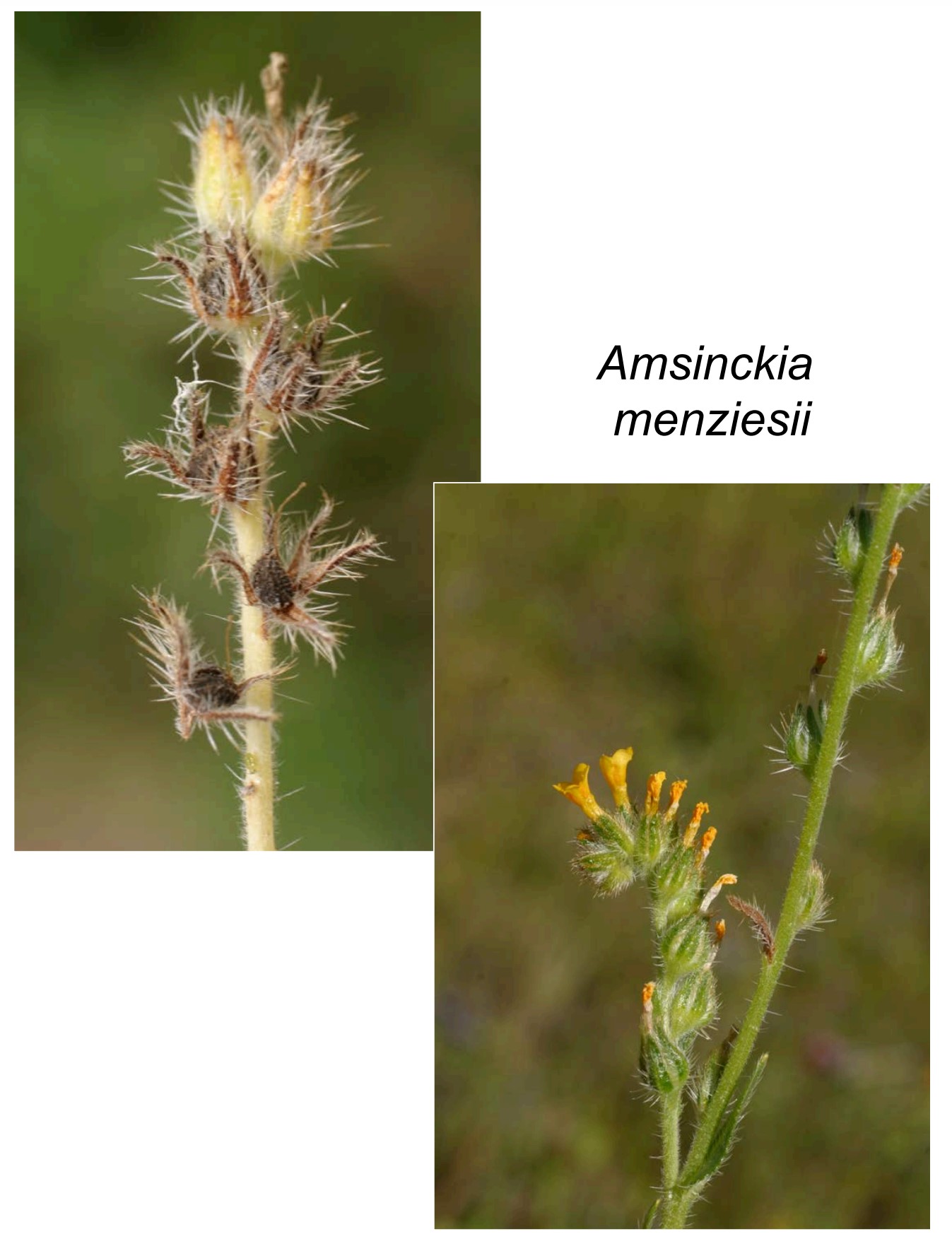
Family?
Boraginaceae
65
New cards
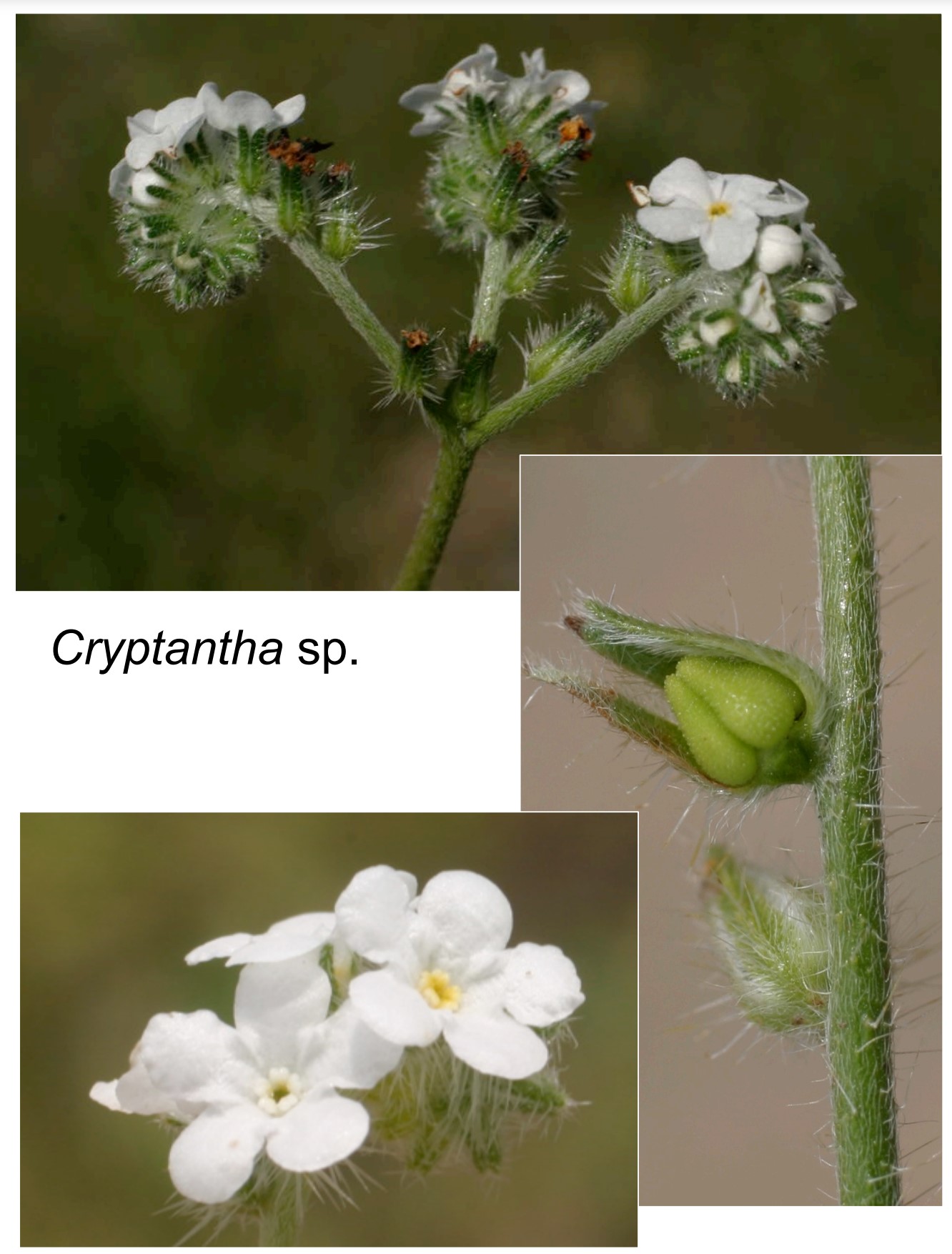
Family?
Boraginaceae
66
New cards
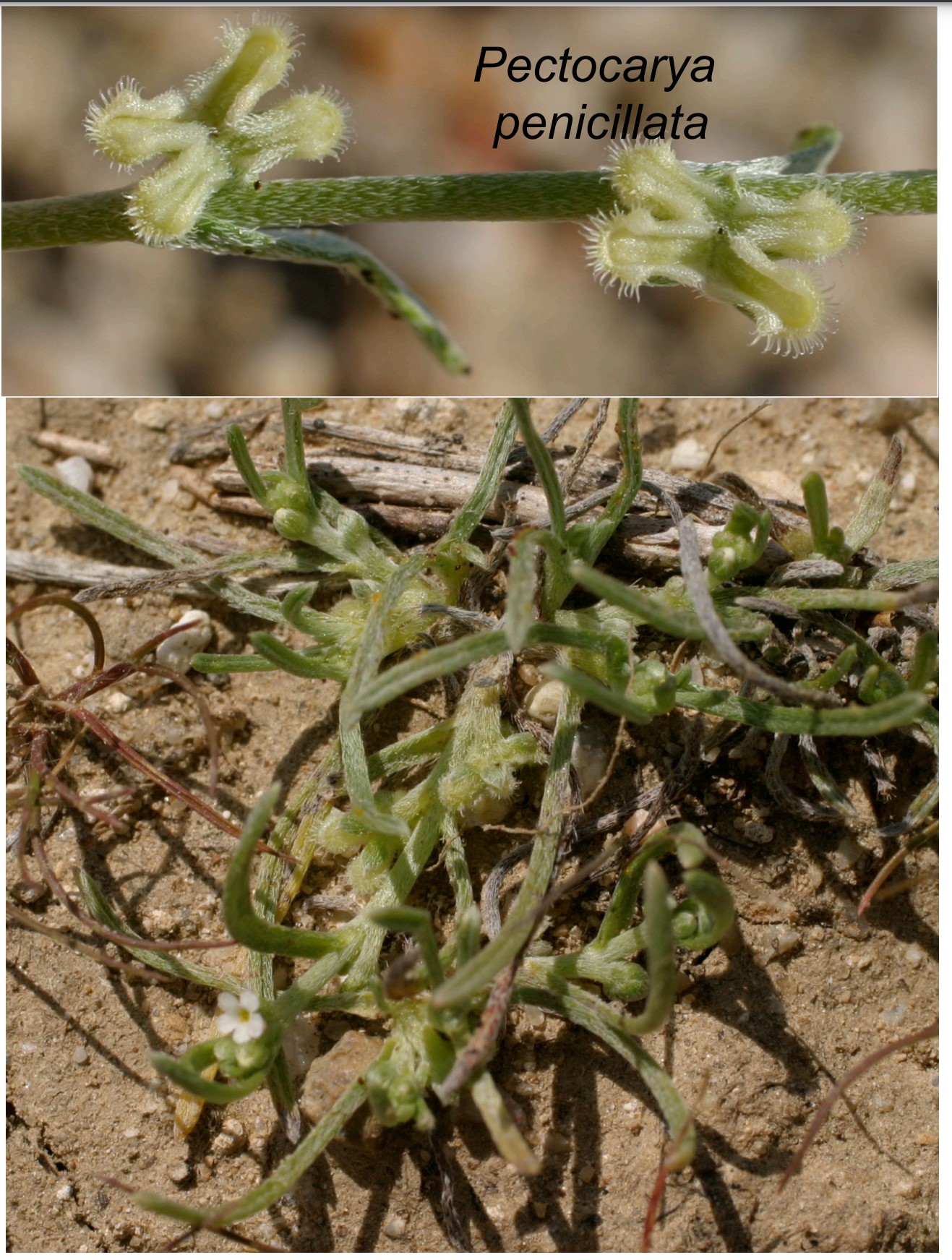
Family?
Boraginaceae
67
New cards
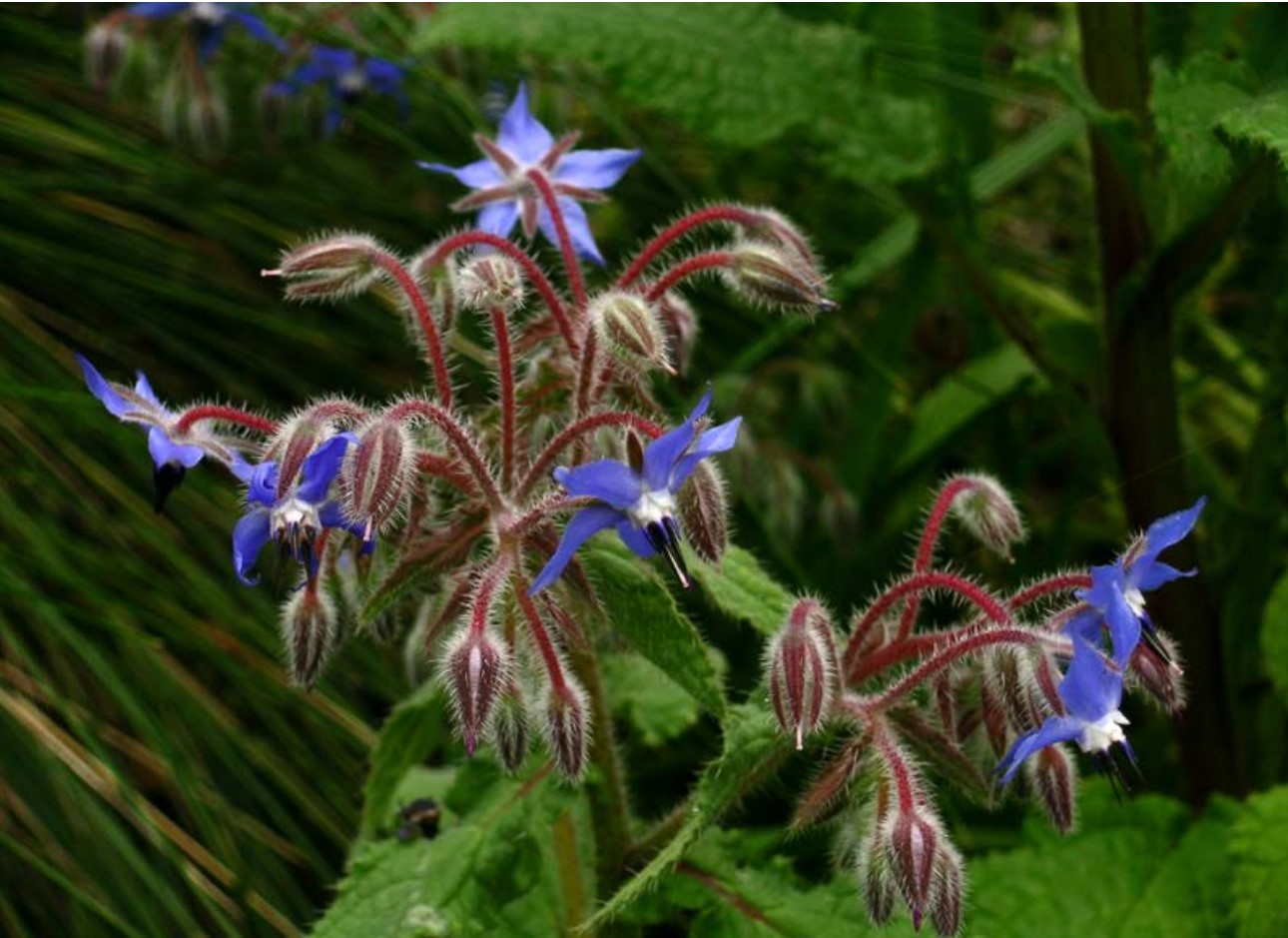
Family?
Boraginaceae
68
New cards

Family?
Boraginaceae
69
New cards
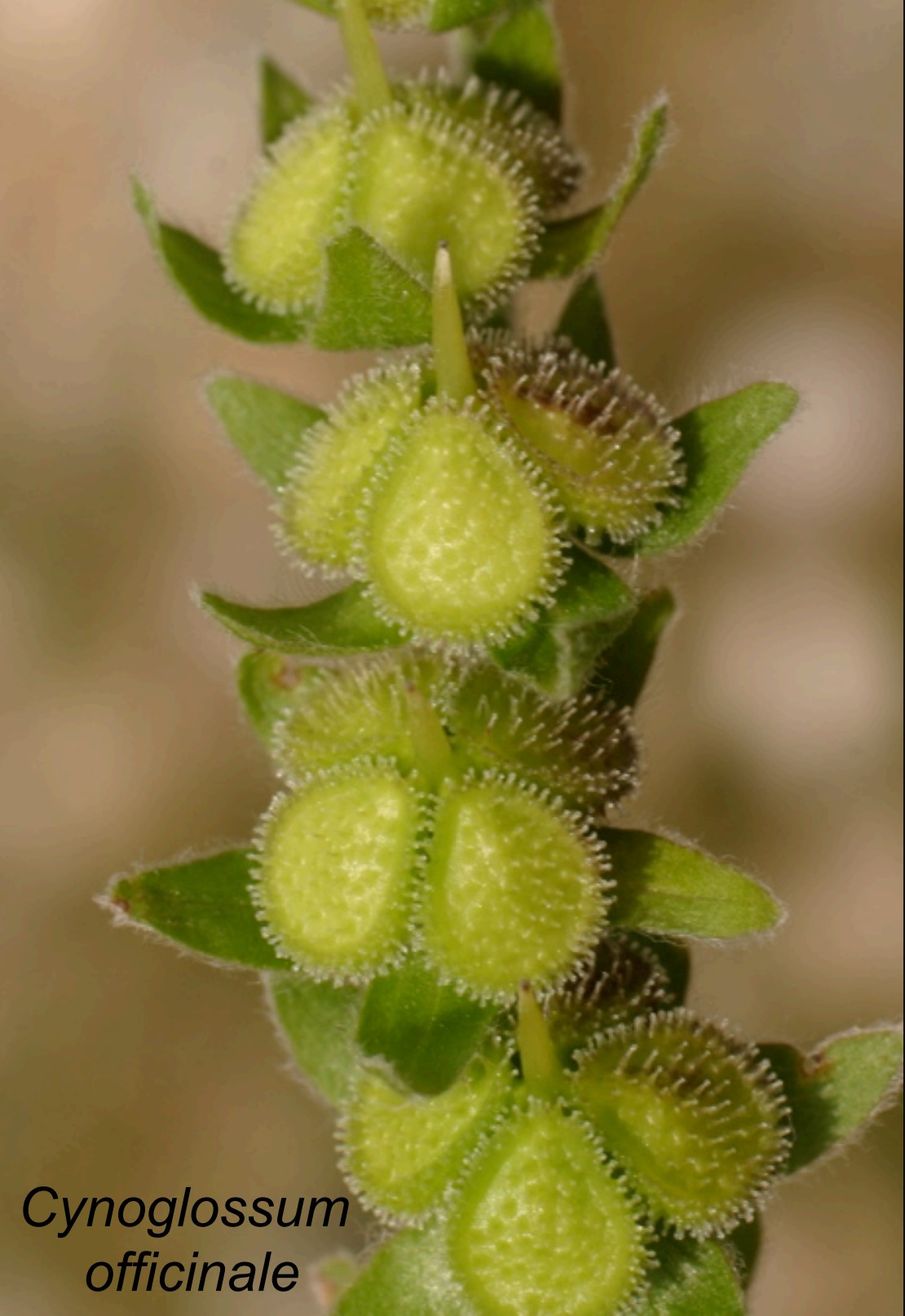
Family?
Boraginaceae
70
New cards
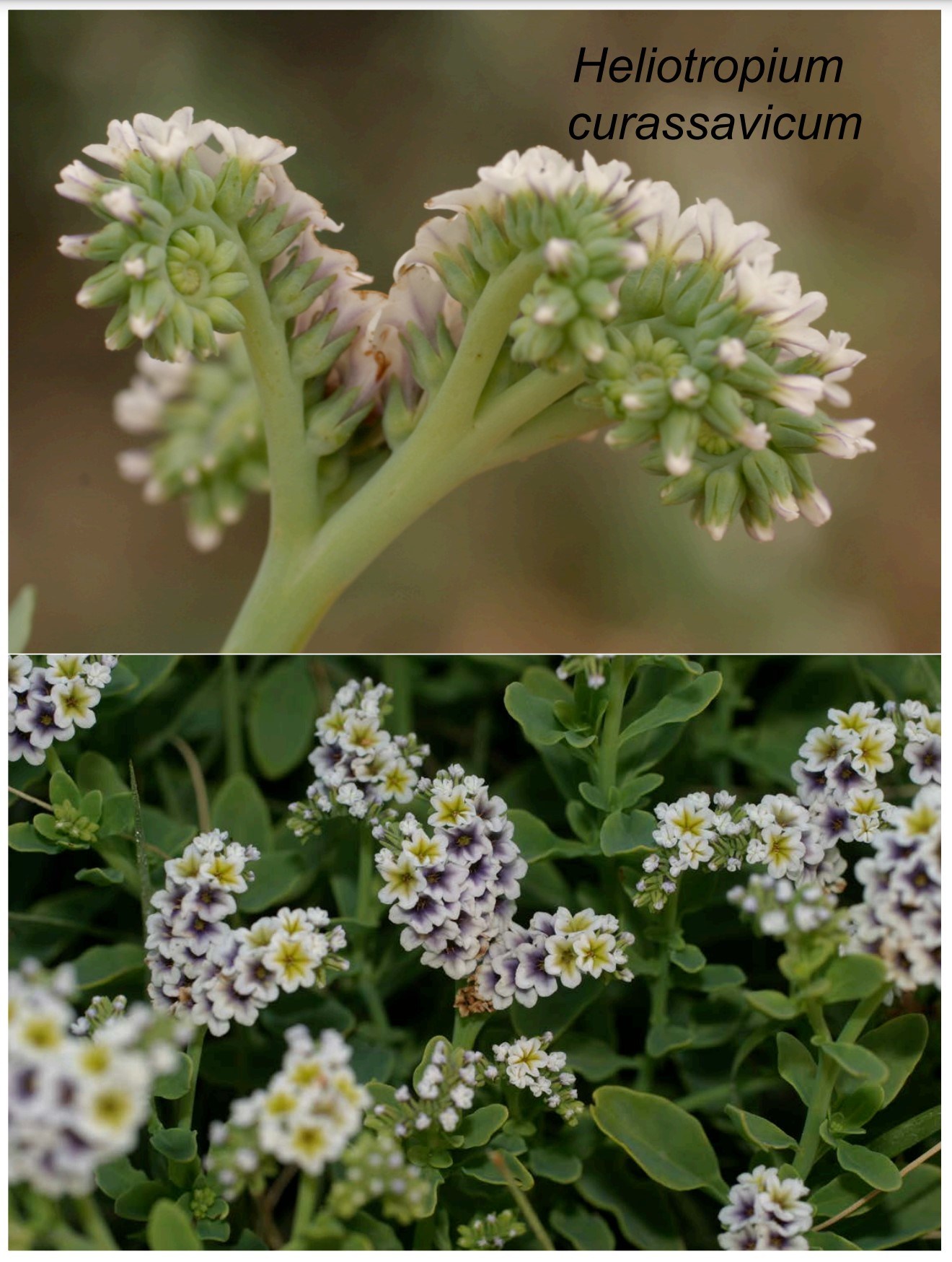
Family?
Boraginaceae
71
New cards
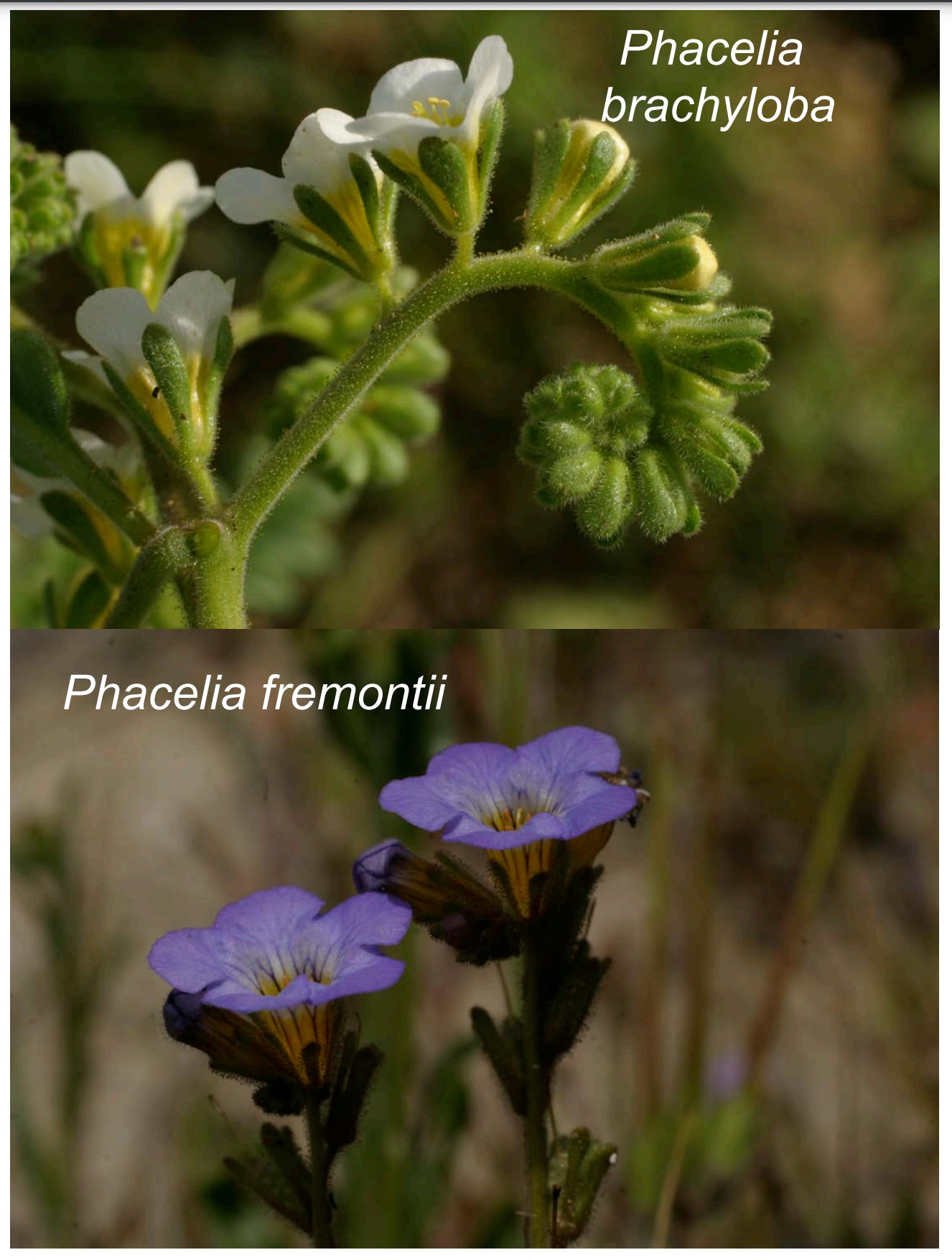
Family?
Boraginaceae
72
New cards
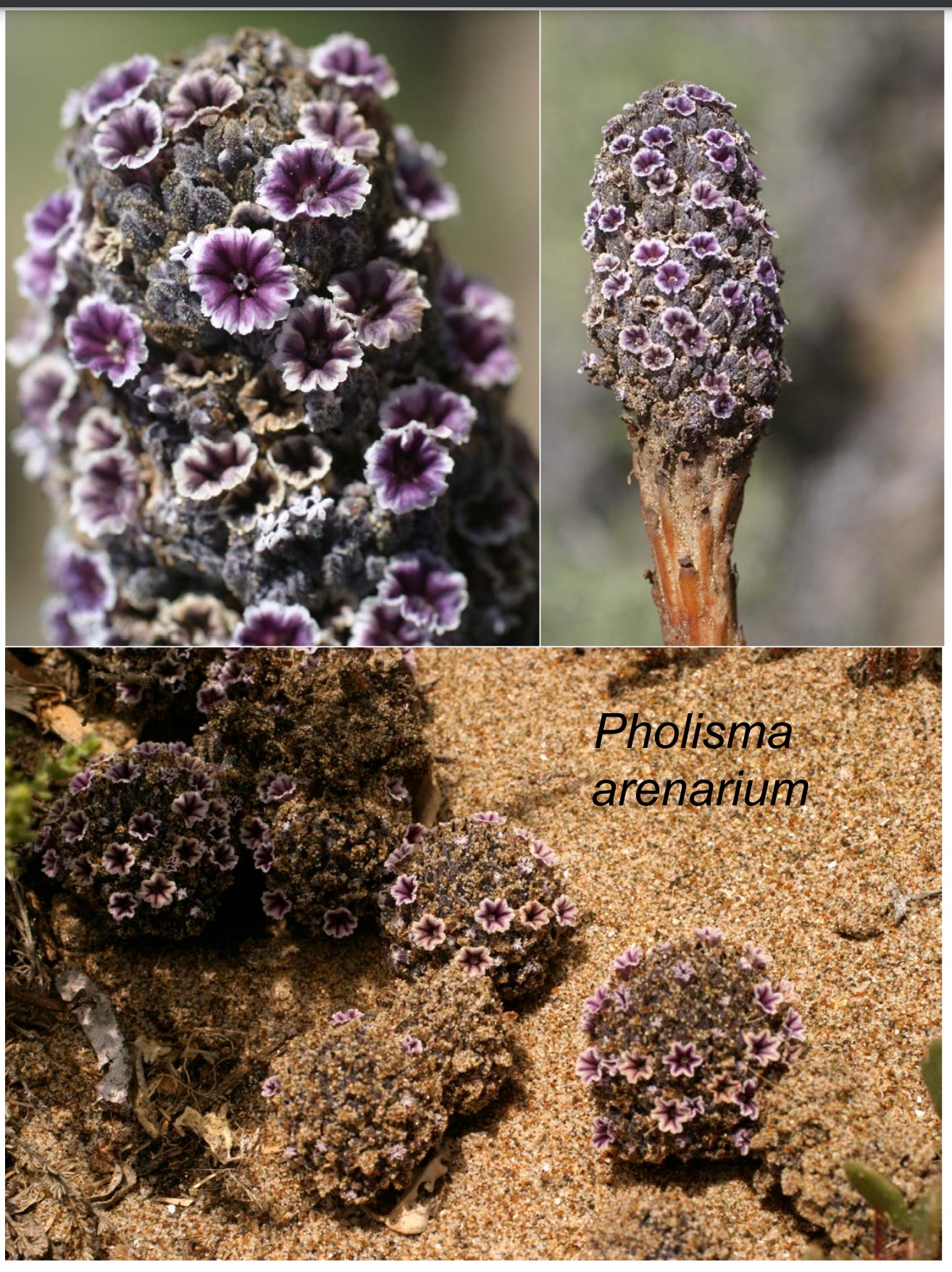
Family?
Boraginaceae
73
New cards
Cactaceae:
Habit, leaves, inflorescence, flowers, perianth, stamens, carpels, fruit
Habit, leaves, inflorescence, flowers, perianth, stamens, carpels, fruit
Habit: herbs to trees, generally stem-succulents
Leaves: primary leaves (those attached to main stems) with expanded blades in subf. Pereskioideae, reduced to fleshy cones or cylinders in subf. Opuntioideae, or not developed beyond leaf primordia in subf. Cactoideae. Secondary leaves (those formed from areoles) developed as fascicles of needle-like spines. Spines in subf. Opuntioideae of two kinds—stiff, needle-like spines (smooth or in Cylindropuntia barbed) and tiny hair-like barbed glochids.
Inflorescence: cymes or solitary flowers in subf. Pereskioideae, solitary flowers emerging from areoles in subfamilies Opuntioideae and Cactoideae
Flowers: perfect, epigynous, sunken into stem tissue, often with spine-bearing areoles on outside of inferior ovary
Perianth: radial or less commonly (in some Cactoideae) bilateral; perianth of spirally attached tepals, the outer ± sepaloid in color and texture, the inner petaloid, united at base with stamens and stem tissue as hypanthium that is proximally adnate to ovary
Stamens: many, distinct, filaments adnate to hypanthium
Carpels: several to many, connate; ovary inferior, 1-loculed, placentation diffusely parietal, ovules many, distributed over inner face of ovary; style 1, unbranched; stigmas several– many, ± connate
Fruit: berry, fleshy capsule, or dry bur.
Leaves: primary leaves (those attached to main stems) with expanded blades in subf. Pereskioideae, reduced to fleshy cones or cylinders in subf. Opuntioideae, or not developed beyond leaf primordia in subf. Cactoideae. Secondary leaves (those formed from areoles) developed as fascicles of needle-like spines. Spines in subf. Opuntioideae of two kinds—stiff, needle-like spines (smooth or in Cylindropuntia barbed) and tiny hair-like barbed glochids.
Inflorescence: cymes or solitary flowers in subf. Pereskioideae, solitary flowers emerging from areoles in subfamilies Opuntioideae and Cactoideae
Flowers: perfect, epigynous, sunken into stem tissue, often with spine-bearing areoles on outside of inferior ovary
Perianth: radial or less commonly (in some Cactoideae) bilateral; perianth of spirally attached tepals, the outer ± sepaloid in color and texture, the inner petaloid, united at base with stamens and stem tissue as hypanthium that is proximally adnate to ovary
Stamens: many, distinct, filaments adnate to hypanthium
Carpels: several to many, connate; ovary inferior, 1-loculed, placentation diffusely parietal, ovules many, distributed over inner face of ovary; style 1, unbranched; stigmas several– many, ± connate
Fruit: berry, fleshy capsule, or dry bur.
74
New cards

Family?
Cactaceae
75
New cards
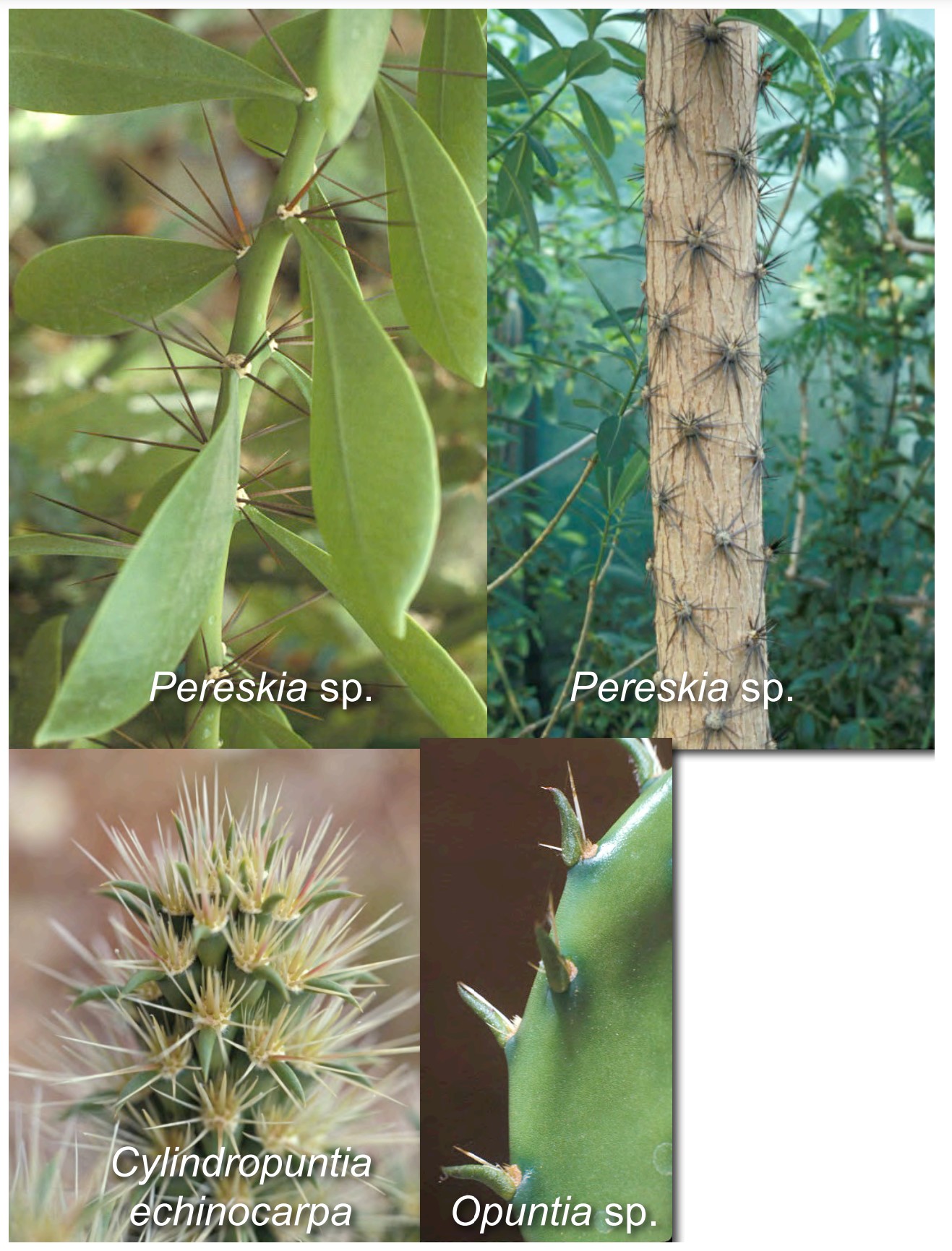
Family?
Cactaceae
76
New cards
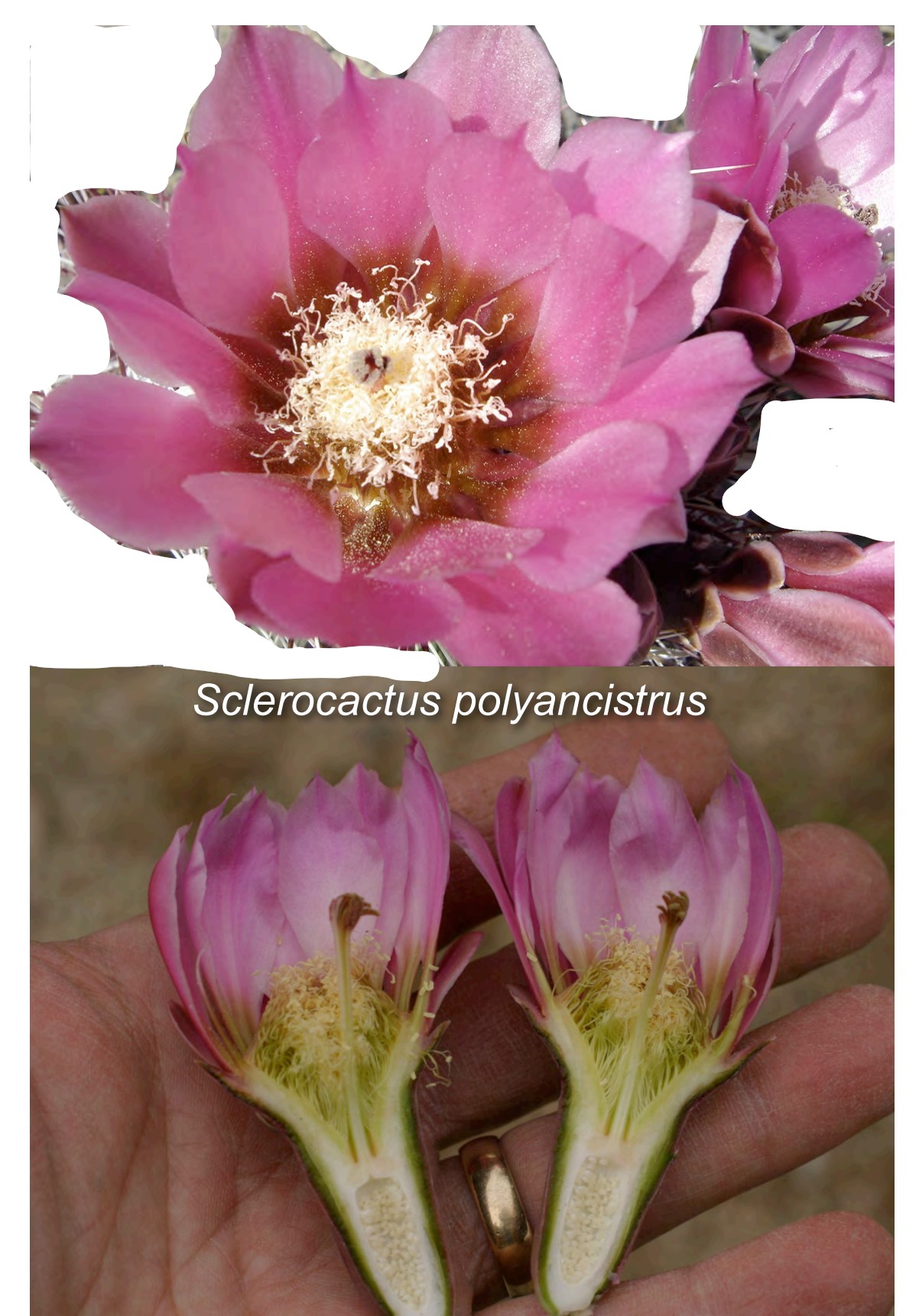
Family?
Cactaceae
77
New cards
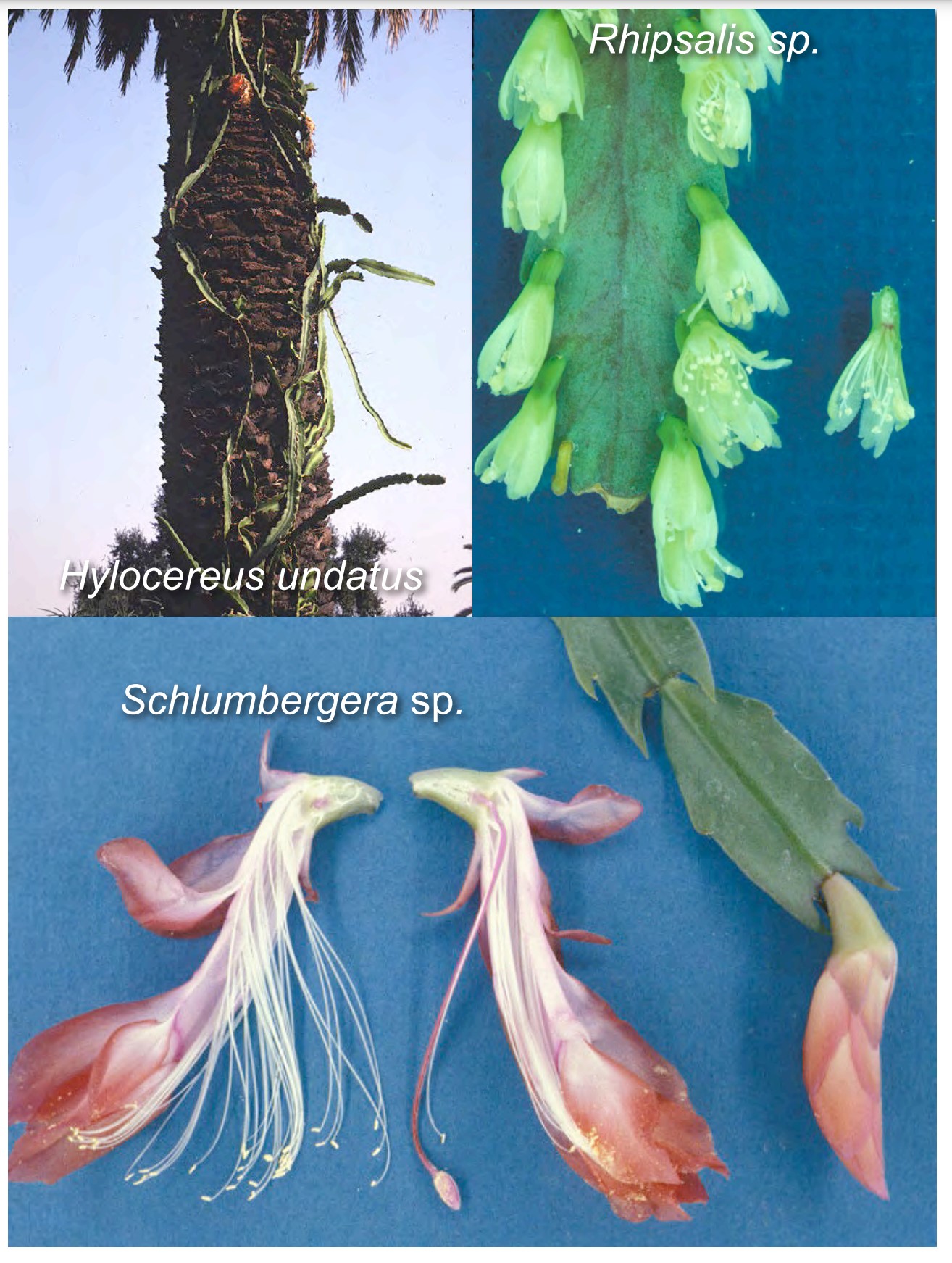
Family?
Cactaceae
78
New cards
Caryophyllaceae:
Habit, leave, inflorescence, flowers, perianth, stamens, carpels, fruit
Habit, leave, inflorescence, flowers, perianth, stamens, carpels, fruit
Pink Family
Habit: herbs
Leaves: opposite, entire, stipulate or estipulate; nodes often swollen
Inflorescence: solitary flowers or cymes
Flowers: usually bisexual, usually hypogynous (perigynous)
Perianth: 5-merous, radial; sepals distinct or connate; petals distinct, often distally notched or fringed
Stamens: usually twice as many as petals
Carpels: 2–5, connate; stigmas/styles as many as carpels; locule 1, placentation free-central, ovules several–many (basal, ovule 1); ovary superior
Fruit: capsule, dehiscent by apical teeth (achene)
Habit: herbs
Leaves: opposite, entire, stipulate or estipulate; nodes often swollen
Inflorescence: solitary flowers or cymes
Flowers: usually bisexual, usually hypogynous (perigynous)
Perianth: 5-merous, radial; sepals distinct or connate; petals distinct, often distally notched or fringed
Stamens: usually twice as many as petals
Carpels: 2–5, connate; stigmas/styles as many as carpels; locule 1, placentation free-central, ovules several–many (basal, ovule 1); ovary superior
Fruit: capsule, dehiscent by apical teeth (achene)
79
New cards
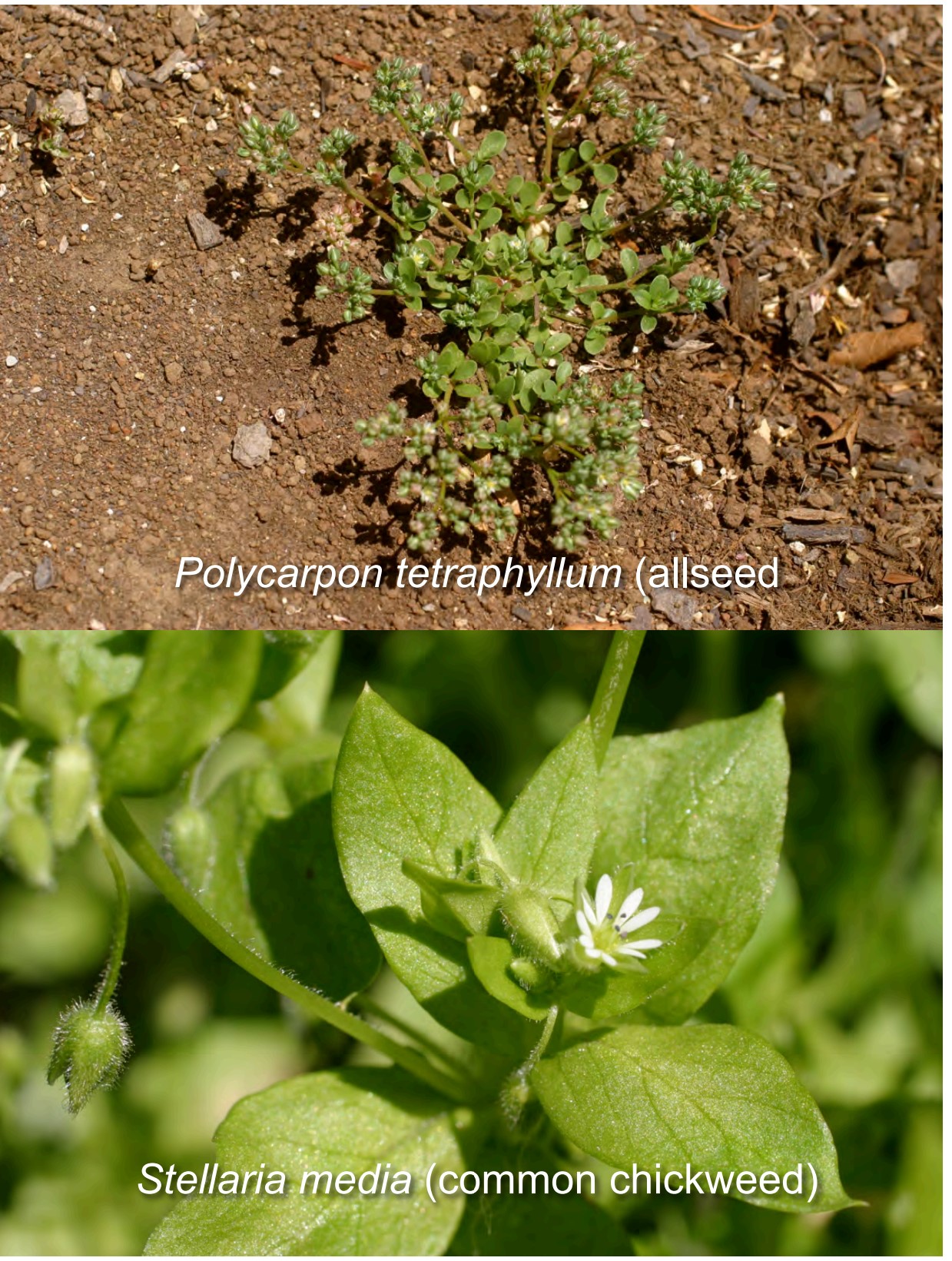
Family?
Caryophyllaceae
80
New cards
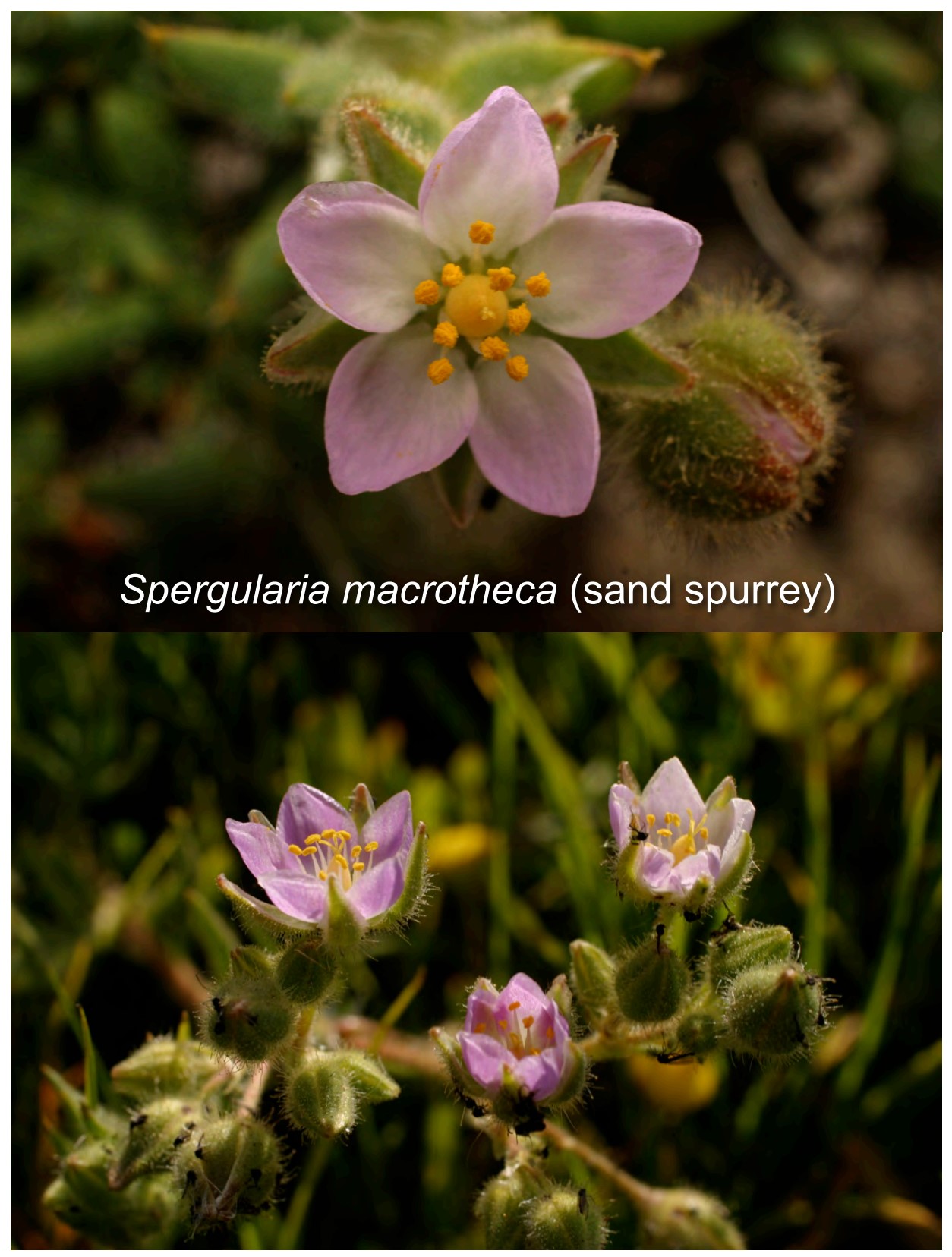
Family?
Caryophyllaceae
81
New cards

Family?
Caryophyllaceae
82
New cards
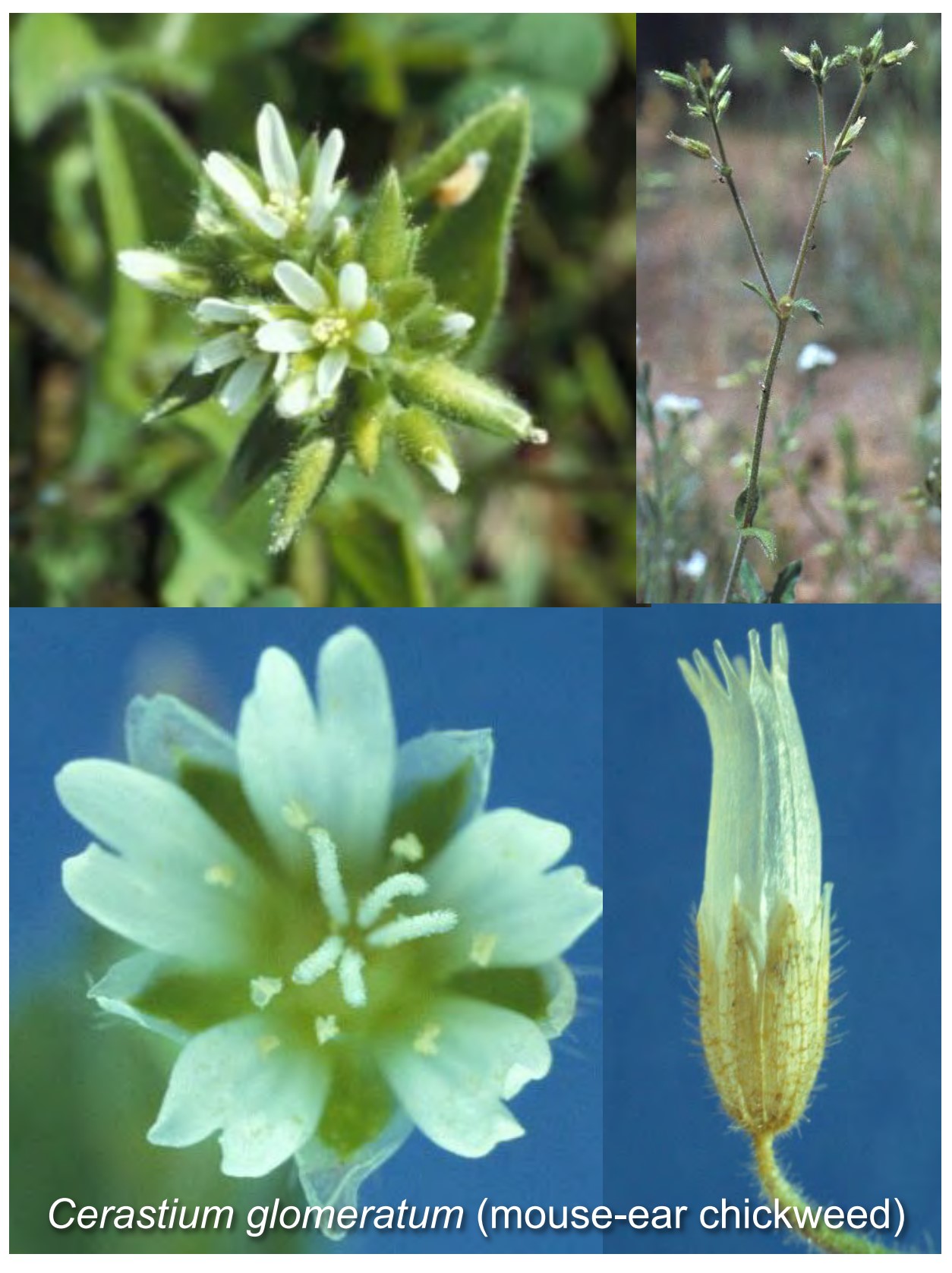
Family?
Caryophyllaceae
83
New cards
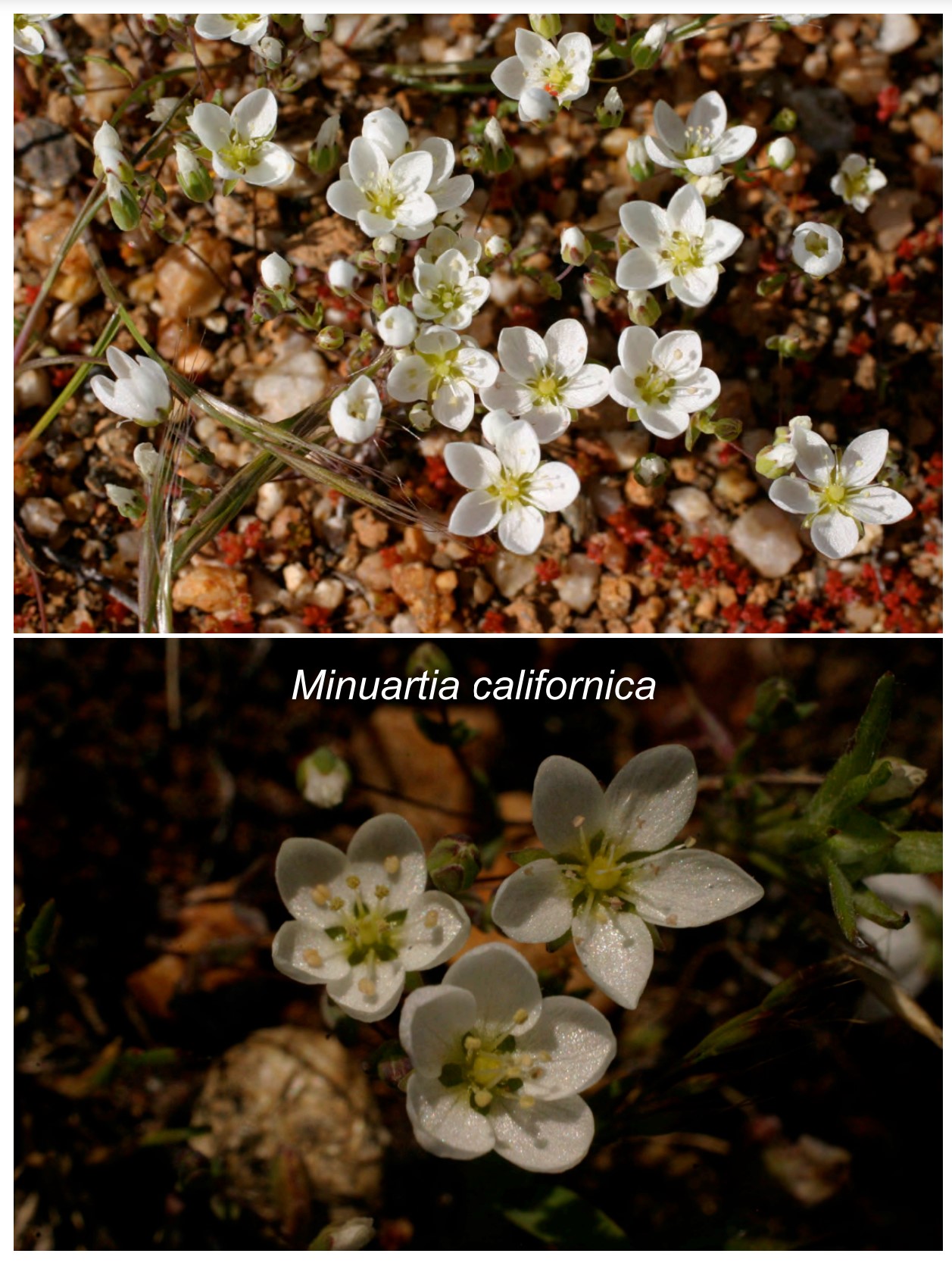
Family?
Caryophyllaceae
84
New cards
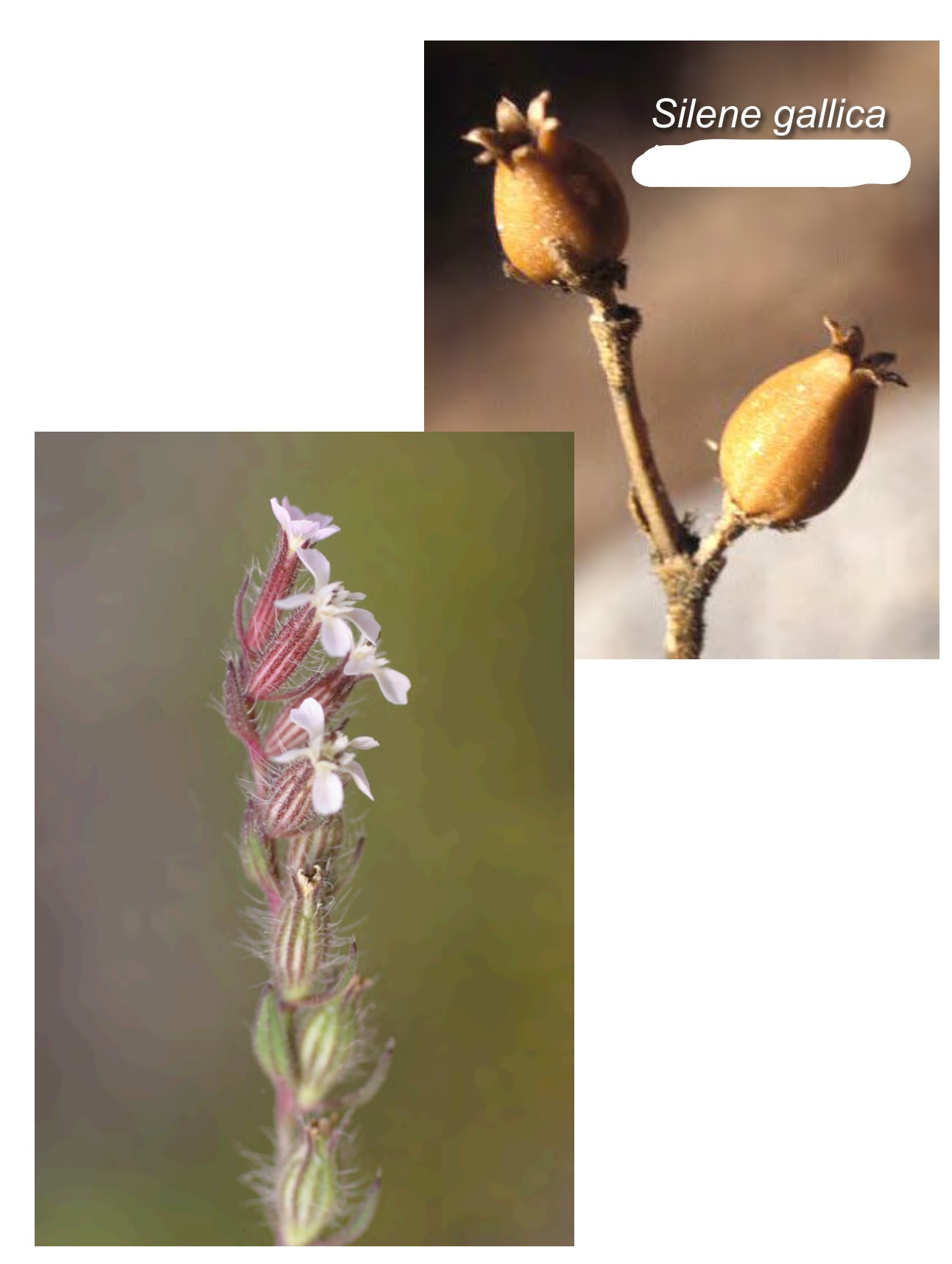
Family?
Caryophyllaceae
85
New cards
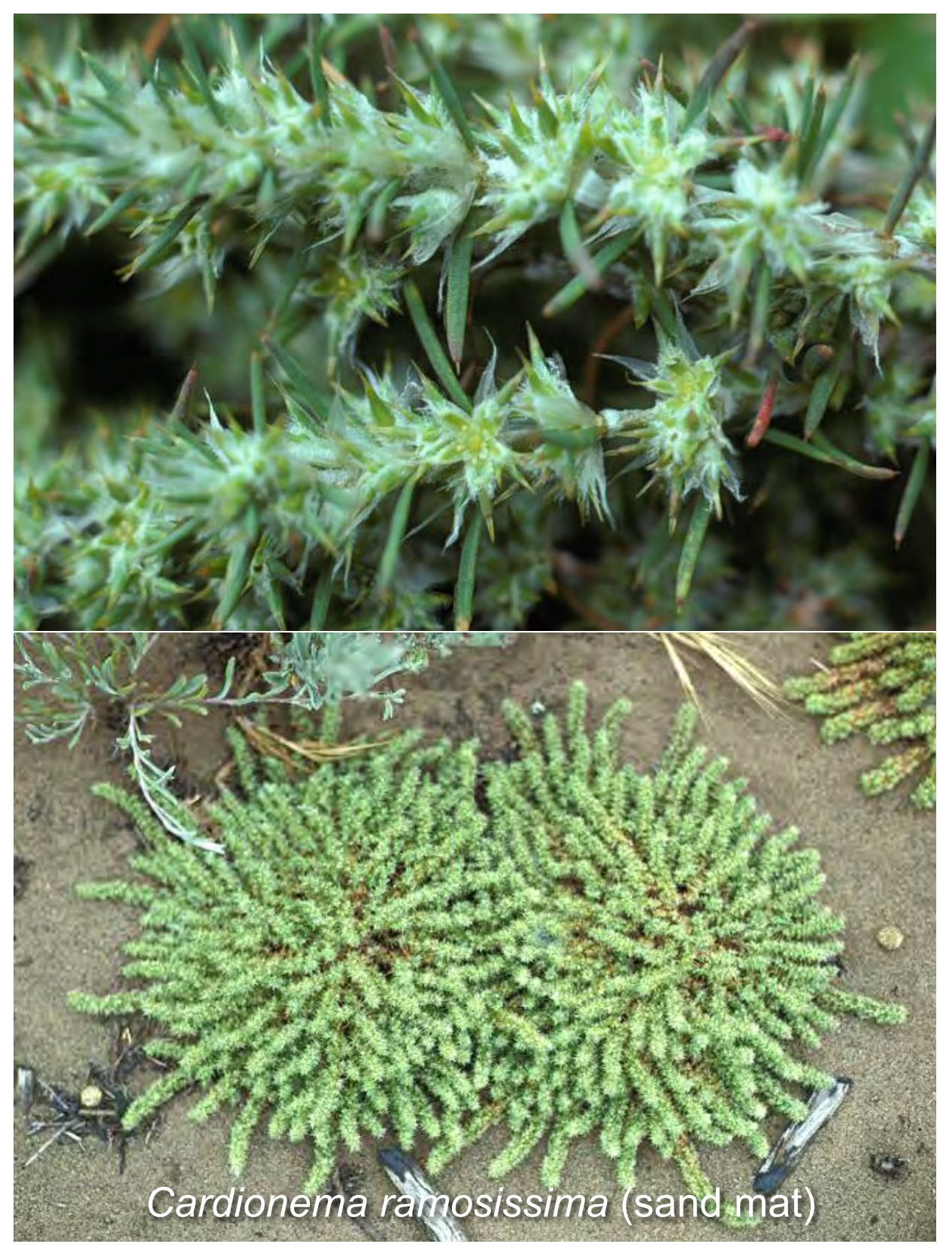
Family?
Caryophyllaceae
86
New cards
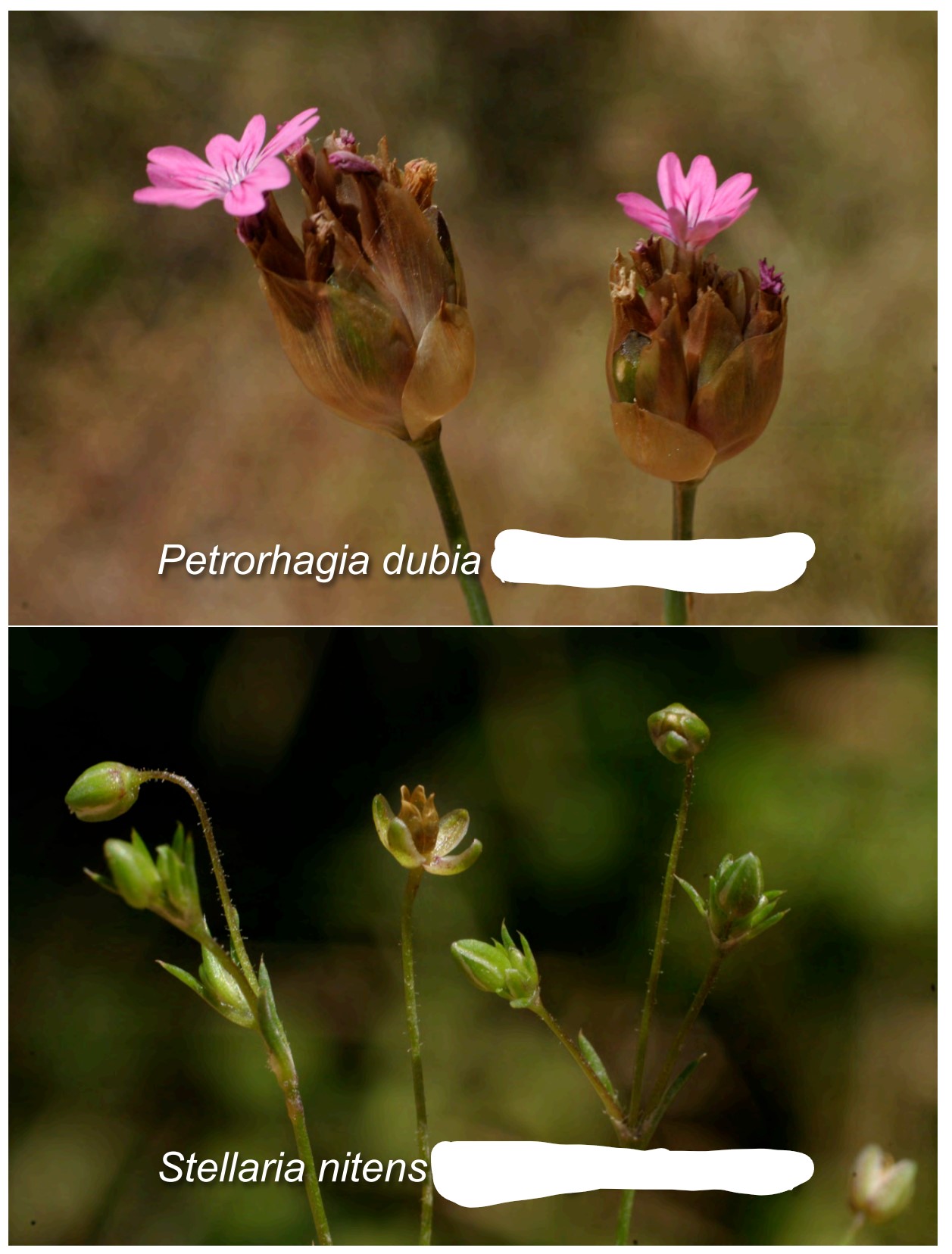
Family?
Caryophyllaceae
87
New cards
Cupressaceae:
Habit, stems, leaves, pollen cone, pollen grains, ovulate cones, seeds
Habit, stems, leaves, pollen cone, pollen grains, ovulate cones, seeds
Redwood/Cypress Family
Habit: shrubs, small to very large trees, evergreen or deciduous.
Stems: trunks 1–many, sometimes massive. Aromatic resin present in stems and leaves.
Leaves: simple, needle-like, awl-like, or scale-like, alternate, opposite and 4-ranked (opposite pairs sometimes dimorphic), or whorled, sessile or petioled, with decurrent bases; internodes very short. Veins 1, unbranched.
Pollen cone simple, maturing and falling annually, composed of a stem axis and opposite or tightly spiraled, scale-like microsporophylls, each with 2–10 pollen sacs on lower surface.
Pollen grains spheric, wingless. Pollen wind-dispersed.
Ovulate cones compound, maturing in 1–2 years, woody (fleshy and berrylike in Juniperus), falling when mature (persistent on branches in closed-cone cypresses; disintegrating at maturity in Taxodium). Composed of a stem axis, opposite or spiraled cone bracts, each of which subtends and is +- completely fused to a cone scale (modified stem) that bears 1–20 ovules on its top surface. Scale-bract complexes flattened and overlapping or peltate and abutting (edge to edge).
Seeds 1–20 per cone scale, winged and wind-dispersed or wingless and gravity-dispersed
Habit: shrubs, small to very large trees, evergreen or deciduous.
Stems: trunks 1–many, sometimes massive. Aromatic resin present in stems and leaves.
Leaves: simple, needle-like, awl-like, or scale-like, alternate, opposite and 4-ranked (opposite pairs sometimes dimorphic), or whorled, sessile or petioled, with decurrent bases; internodes very short. Veins 1, unbranched.
Pollen cone simple, maturing and falling annually, composed of a stem axis and opposite or tightly spiraled, scale-like microsporophylls, each with 2–10 pollen sacs on lower surface.
Pollen grains spheric, wingless. Pollen wind-dispersed.
Ovulate cones compound, maturing in 1–2 years, woody (fleshy and berrylike in Juniperus), falling when mature (persistent on branches in closed-cone cypresses; disintegrating at maturity in Taxodium). Composed of a stem axis, opposite or spiraled cone bracts, each of which subtends and is +- completely fused to a cone scale (modified stem) that bears 1–20 ovules on its top surface. Scale-bract complexes flattened and overlapping or peltate and abutting (edge to edge).
Seeds 1–20 per cone scale, winged and wind-dispersed or wingless and gravity-dispersed
88
New cards
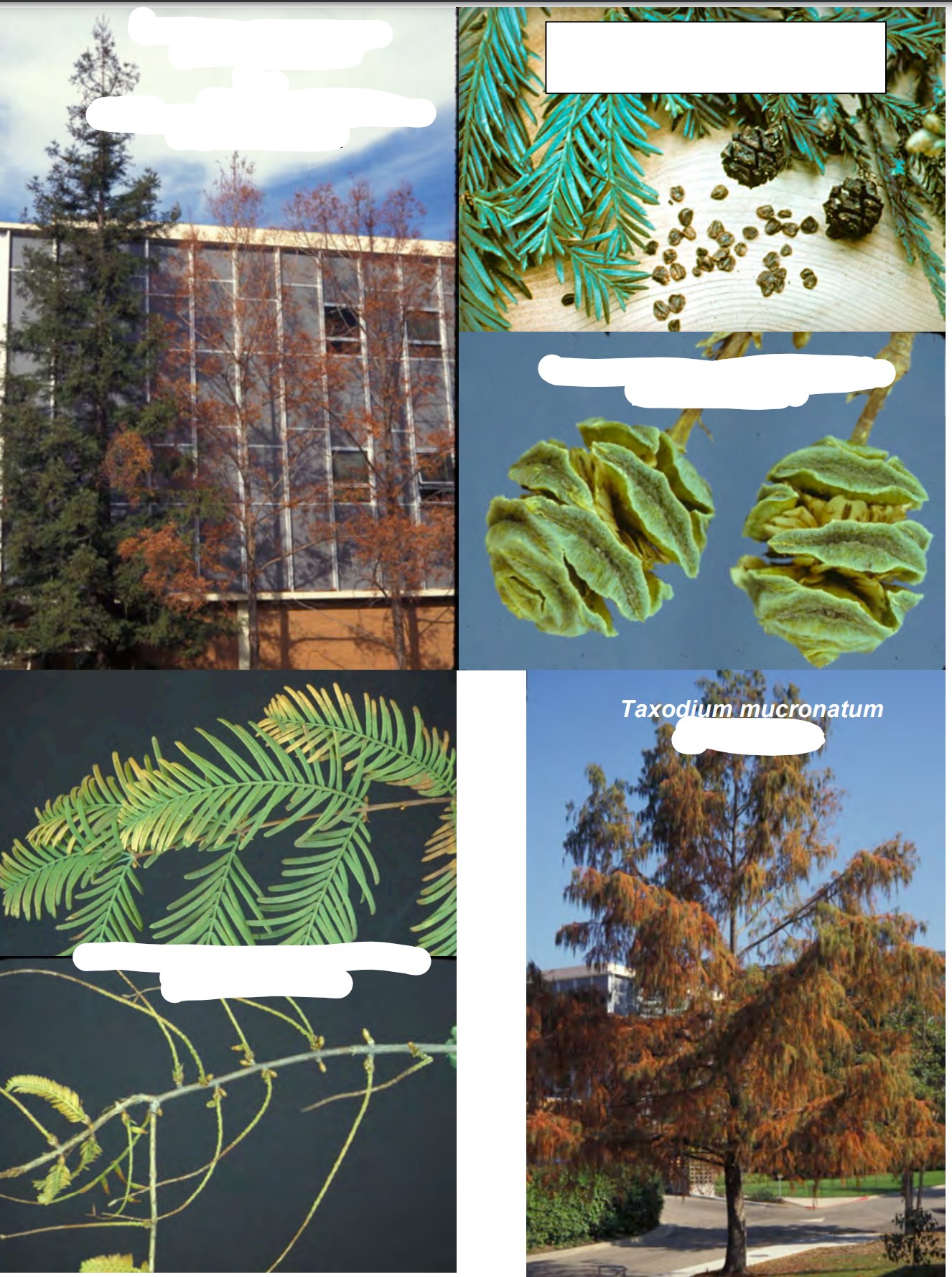
Family?
Cupressaceae
89
New cards
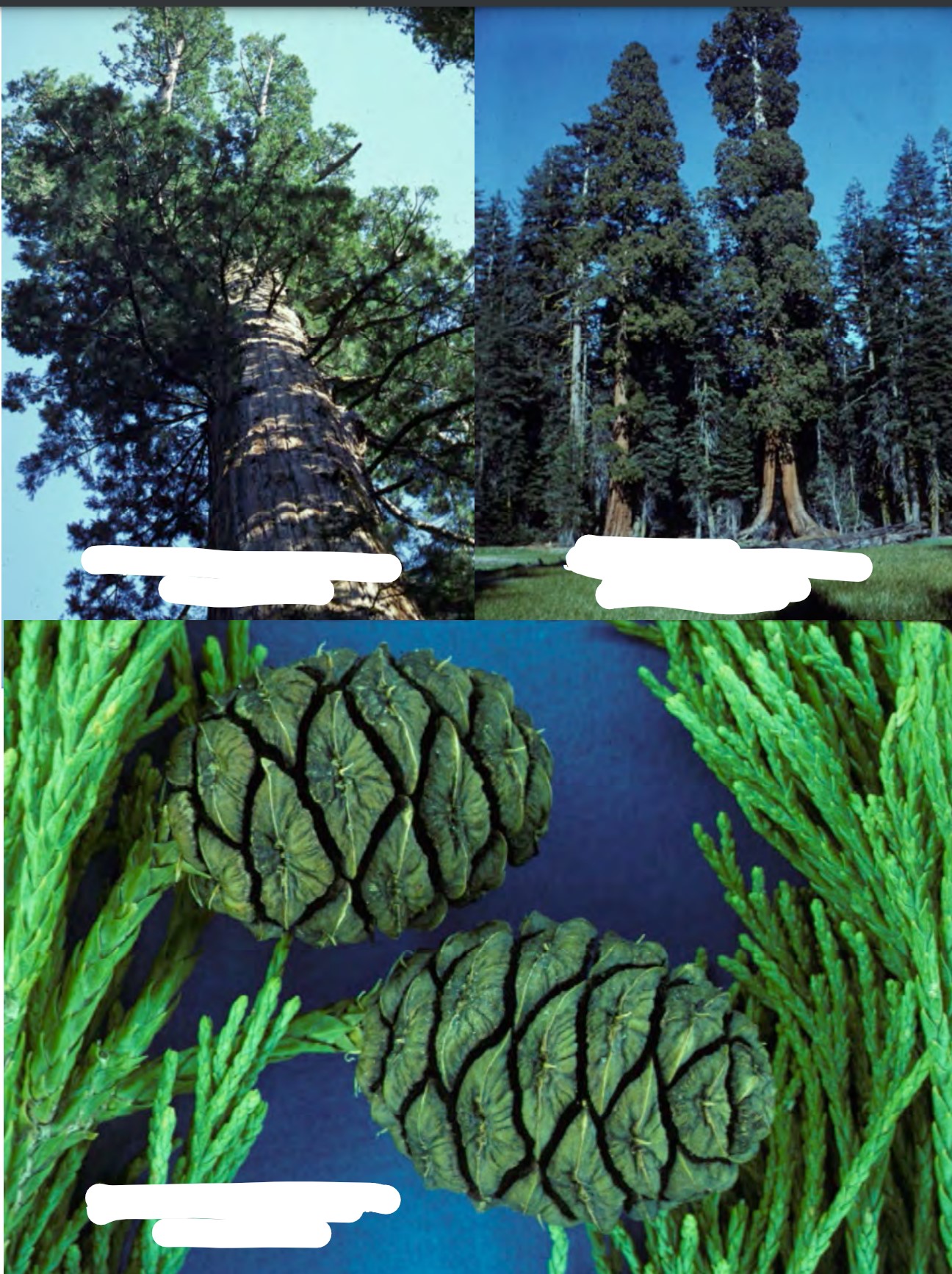
Family?
Cupressaceae
90
New cards
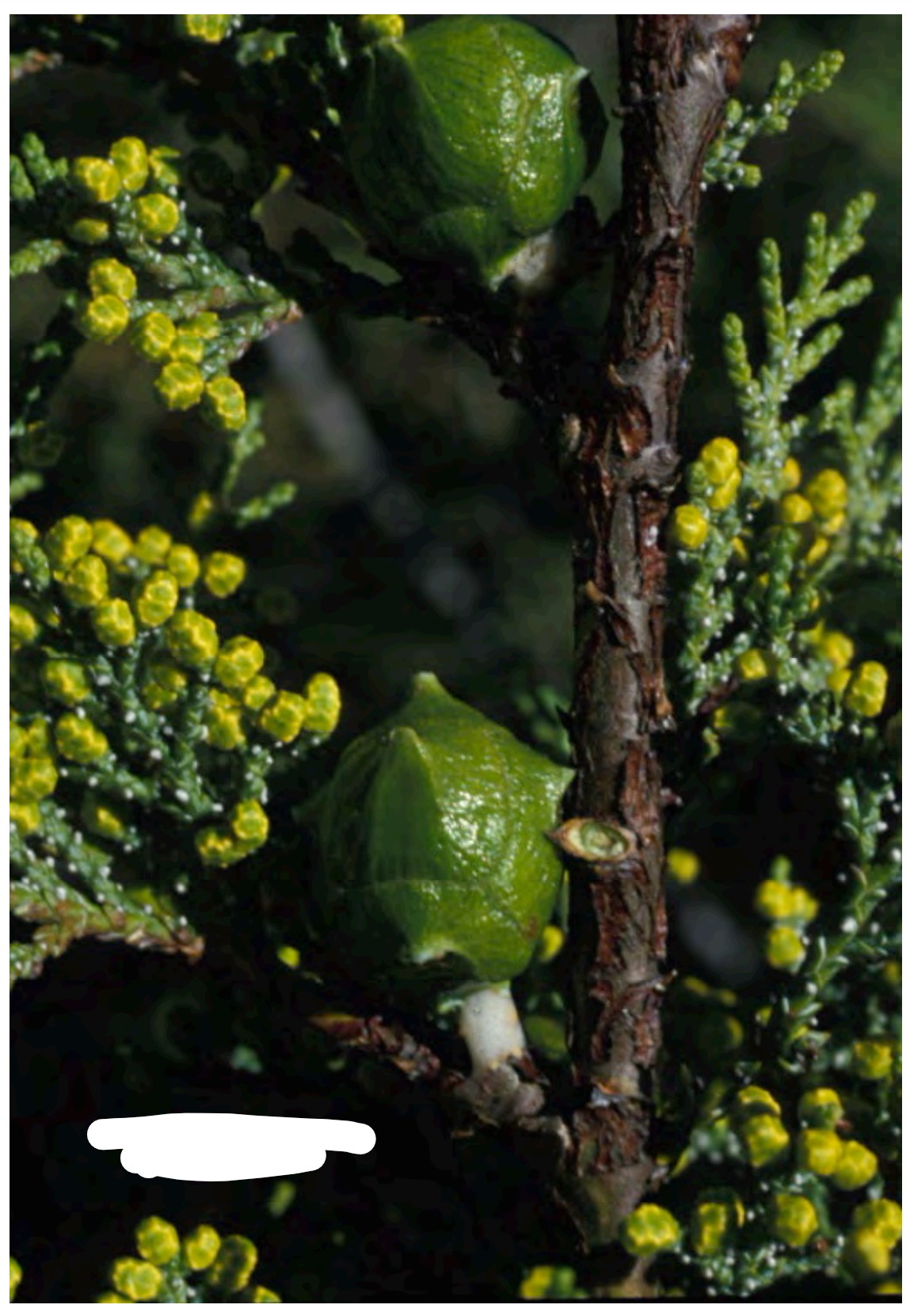
Family?
Cupressaceae
91
New cards
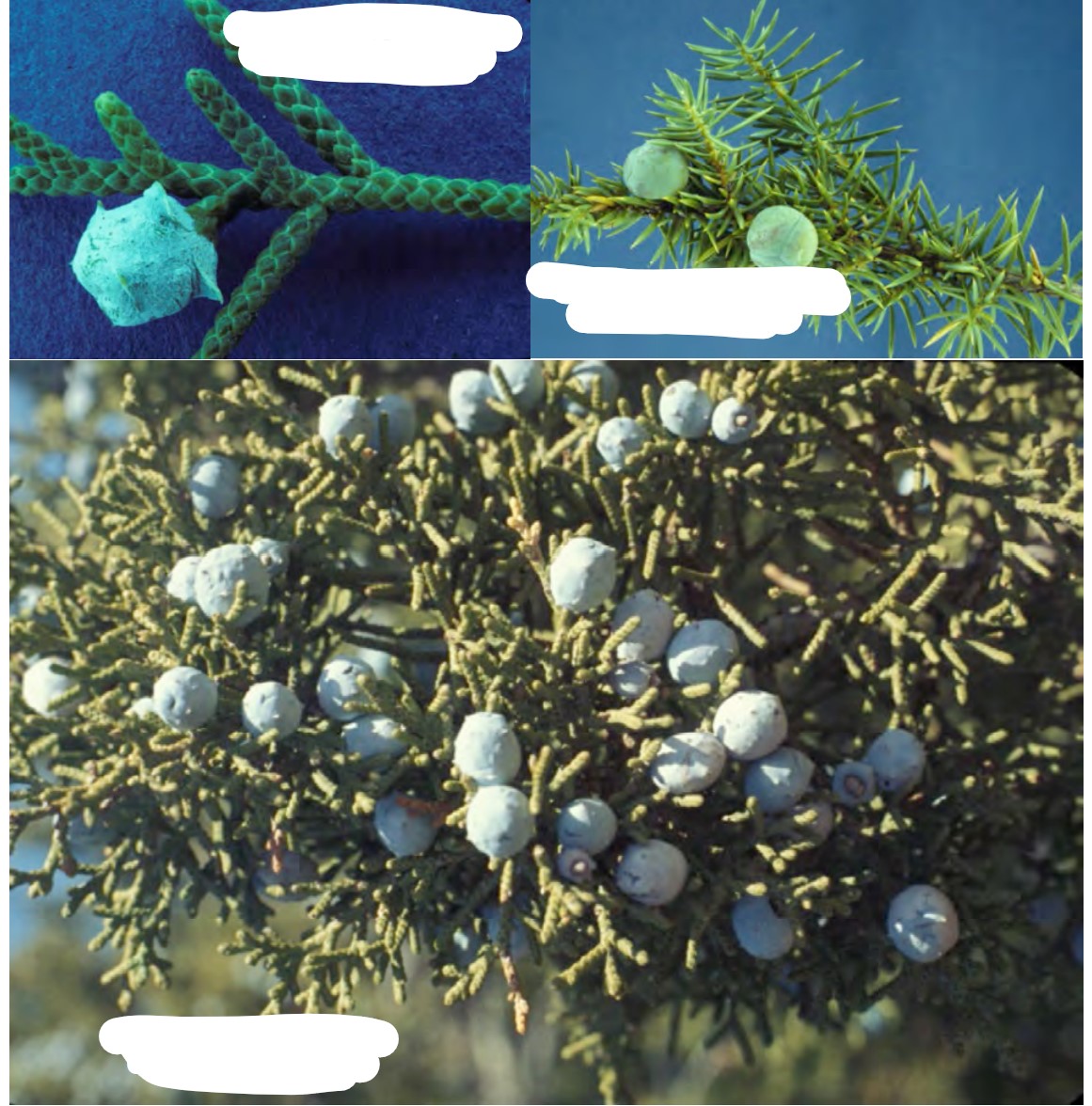
Family?
Cupressaceae
92
New cards
Dryopteridaceae:
Habit, roots, leaves, sori, spores, gametophytes
Habit, roots, leaves, sori, spores, gametophytes
Wood Fern Family
Habit: small to medium
Rhizomes creeping to erect, branched or unbranched, bearing scales.
Leaves: vegetative and sporangium-bearing leaves monomorphic (all similar in appearance) or dimorphic (vegetative leaves broader and flatter than spore-bearing leaves which often have narrow, tightly revolute-margined segments). Petiole slender to stout, usually green, scales usually persistent at base, in cross section with 2--many roundish bundles, or bundles 2 and crescent-shaped. Leaf blade simple to commonly 1--5 or more times pinnate or divided, glabrous or with glands, hairs, and/or scales, especially on rachis and midveins abaxially. Veins pinnate or parallel in ultimate segments, simple or forked, free or forming a network.
Sori borne abaxially on veins or at vein tips (but usually not marginal), or sporangia densely covering abaxial surface. Sori variously shaped (round, oblong, or elongate), with or without indusium, indusium linear, sickle-shaped, round, reniform, hoodlike, or cuplike. Sporangia with stalk of 2--3 rows of cells; annulus vertical, interrupted by stalk.
Spores all of 1 kind, usually 64 per sporangium.
Gametophytes green, above-ground, cordate, glabrous or often bearing glands or hairs.
Habit: small to medium
Rhizomes creeping to erect, branched or unbranched, bearing scales.
Leaves: vegetative and sporangium-bearing leaves monomorphic (all similar in appearance) or dimorphic (vegetative leaves broader and flatter than spore-bearing leaves which often have narrow, tightly revolute-margined segments). Petiole slender to stout, usually green, scales usually persistent at base, in cross section with 2--many roundish bundles, or bundles 2 and crescent-shaped. Leaf blade simple to commonly 1--5 or more times pinnate or divided, glabrous or with glands, hairs, and/or scales, especially on rachis and midveins abaxially. Veins pinnate or parallel in ultimate segments, simple or forked, free or forming a network.
Sori borne abaxially on veins or at vein tips (but usually not marginal), or sporangia densely covering abaxial surface. Sori variously shaped (round, oblong, or elongate), with or without indusium, indusium linear, sickle-shaped, round, reniform, hoodlike, or cuplike. Sporangia with stalk of 2--3 rows of cells; annulus vertical, interrupted by stalk.
Spores all of 1 kind, usually 64 per sporangium.
Gametophytes green, above-ground, cordate, glabrous or often bearing glands or hairs.
93
New cards
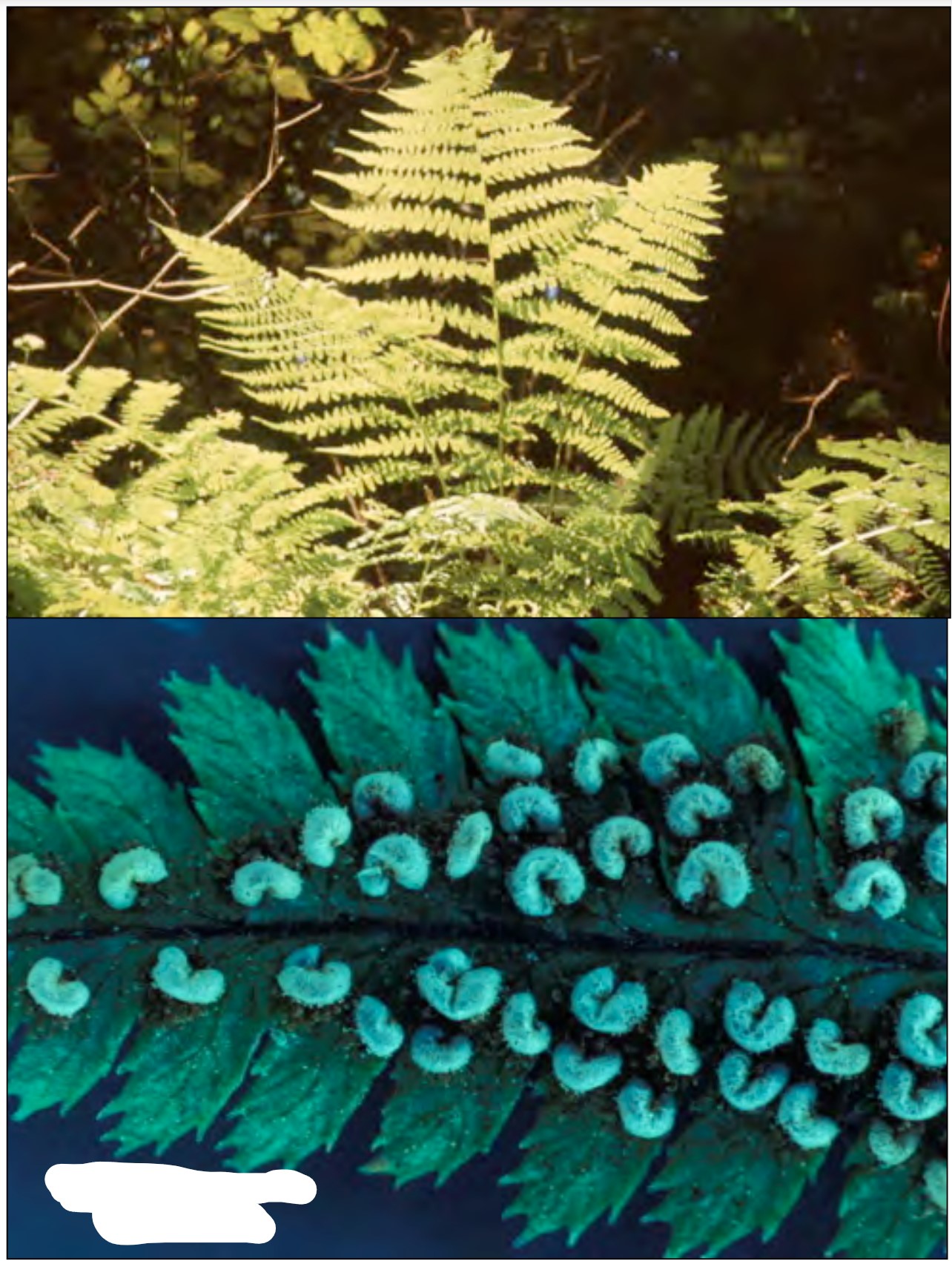
Family?
Dryopteridaceae
94
New cards
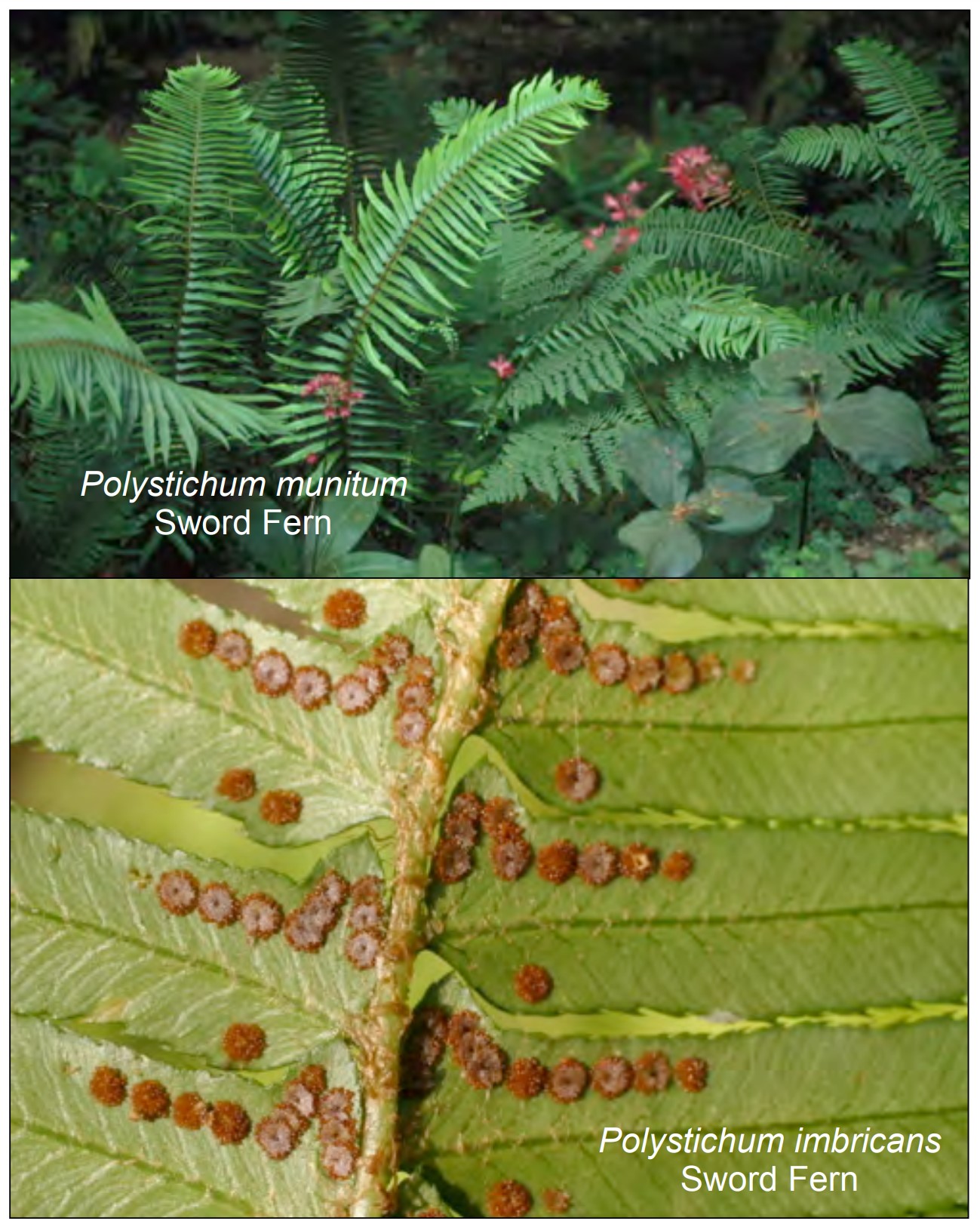
Family?
Dryopteridaceae
95
New cards
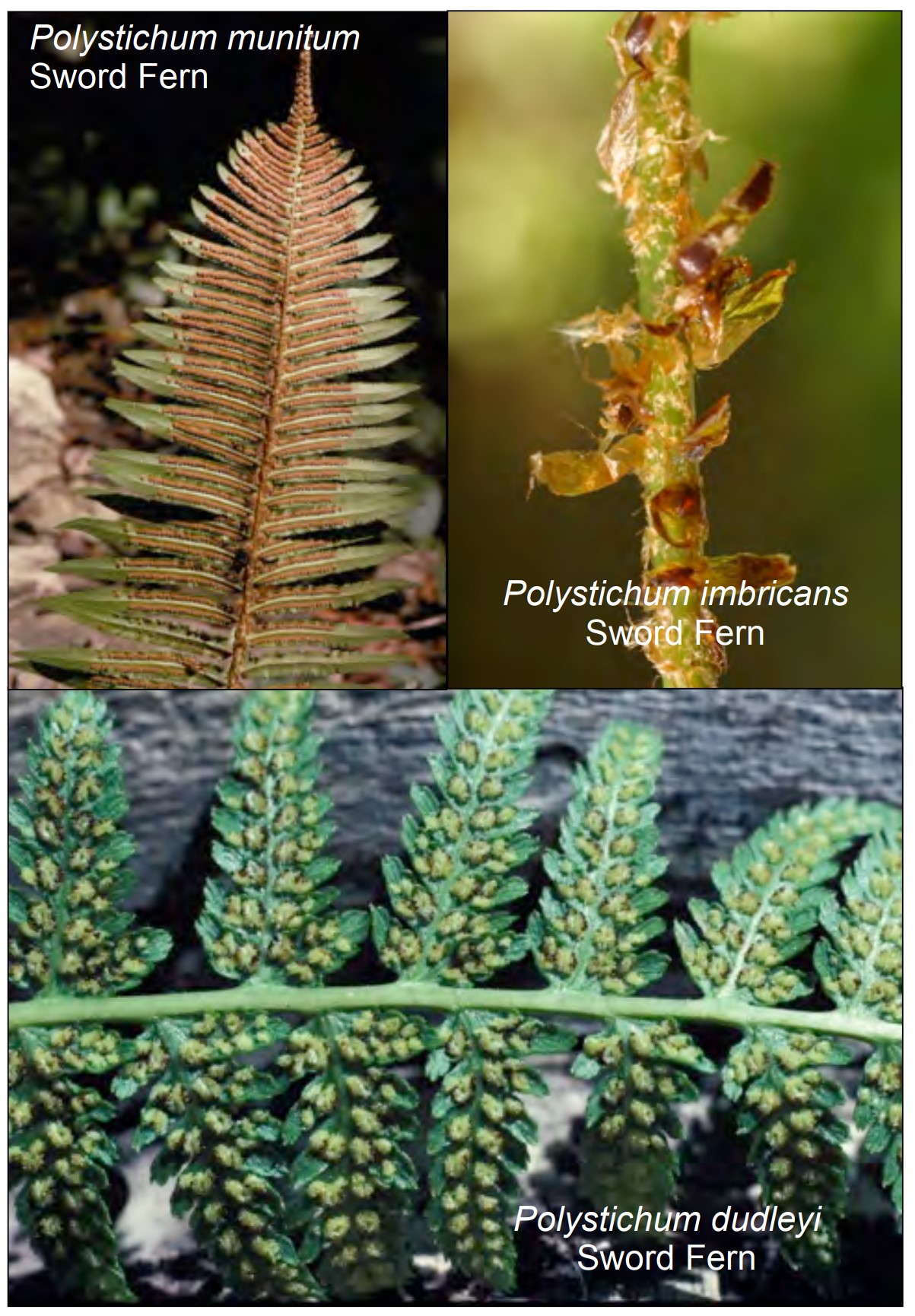
Family?
Dryopteridaceae
96
New cards
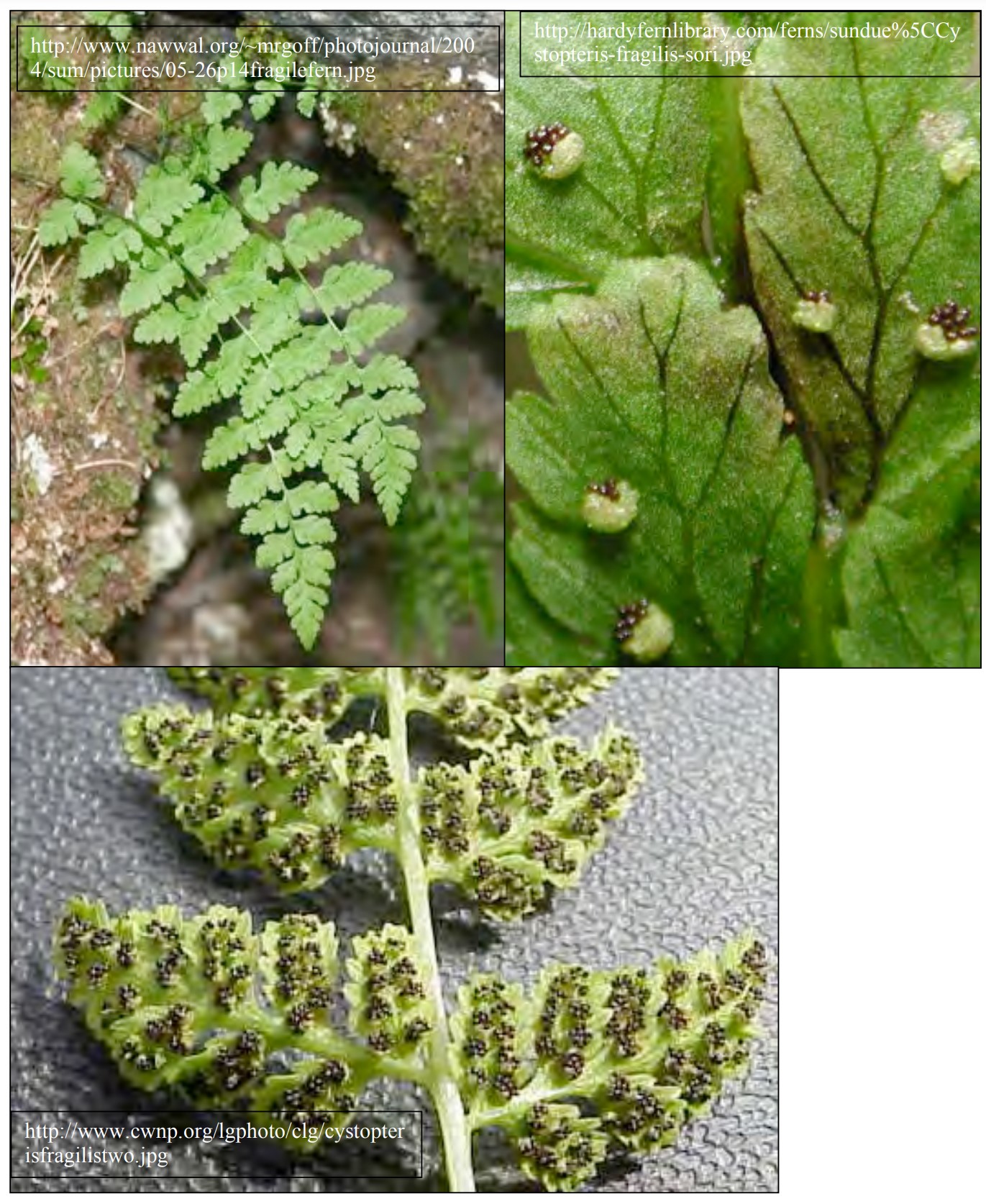
Family?
Dryopteridaceae
97
New cards

Family?
Dryopteridaceae
98
New cards
Equisetaceae:
Size, rhizomes, stems, leaves, sporangia, spores, gametophytes
Size, rhizomes, stems, leaves, sporangia, spores, gametophytes
Horsetail Family
Size: small to large
Rhizomes creeping.
Aerial stems erect, jointed, unbranched or with whorled branches, ridged, with hollow internodes, monomorphic and all green with strobili at tips of some or all stems, or dimorphic with green, branched, vegetative stems and pale, non-green, unbranched stems that bear strobili.
Leaves: leaves whorled, scale-like, 1-veined, fused into tube or cup at base.
Sporangia: eusporangia borne on undersides of peltate, polygonal sporangiophores that are clustered on a central axis forming a strobilus.
Spores all of 1 kind, green, many per sporangium, each spore with 4 threadlike hygroscopic elaters.
Gametophytes green, above-ground, strap-shaped, glabrous, unisexual or bisexual.
Size: small to large
Rhizomes creeping.
Aerial stems erect, jointed, unbranched or with whorled branches, ridged, with hollow internodes, monomorphic and all green with strobili at tips of some or all stems, or dimorphic with green, branched, vegetative stems and pale, non-green, unbranched stems that bear strobili.
Leaves: leaves whorled, scale-like, 1-veined, fused into tube or cup at base.
Sporangia: eusporangia borne on undersides of peltate, polygonal sporangiophores that are clustered on a central axis forming a strobilus.
Spores all of 1 kind, green, many per sporangium, each spore with 4 threadlike hygroscopic elaters.
Gametophytes green, above-ground, strap-shaped, glabrous, unisexual or bisexual.
99
New cards
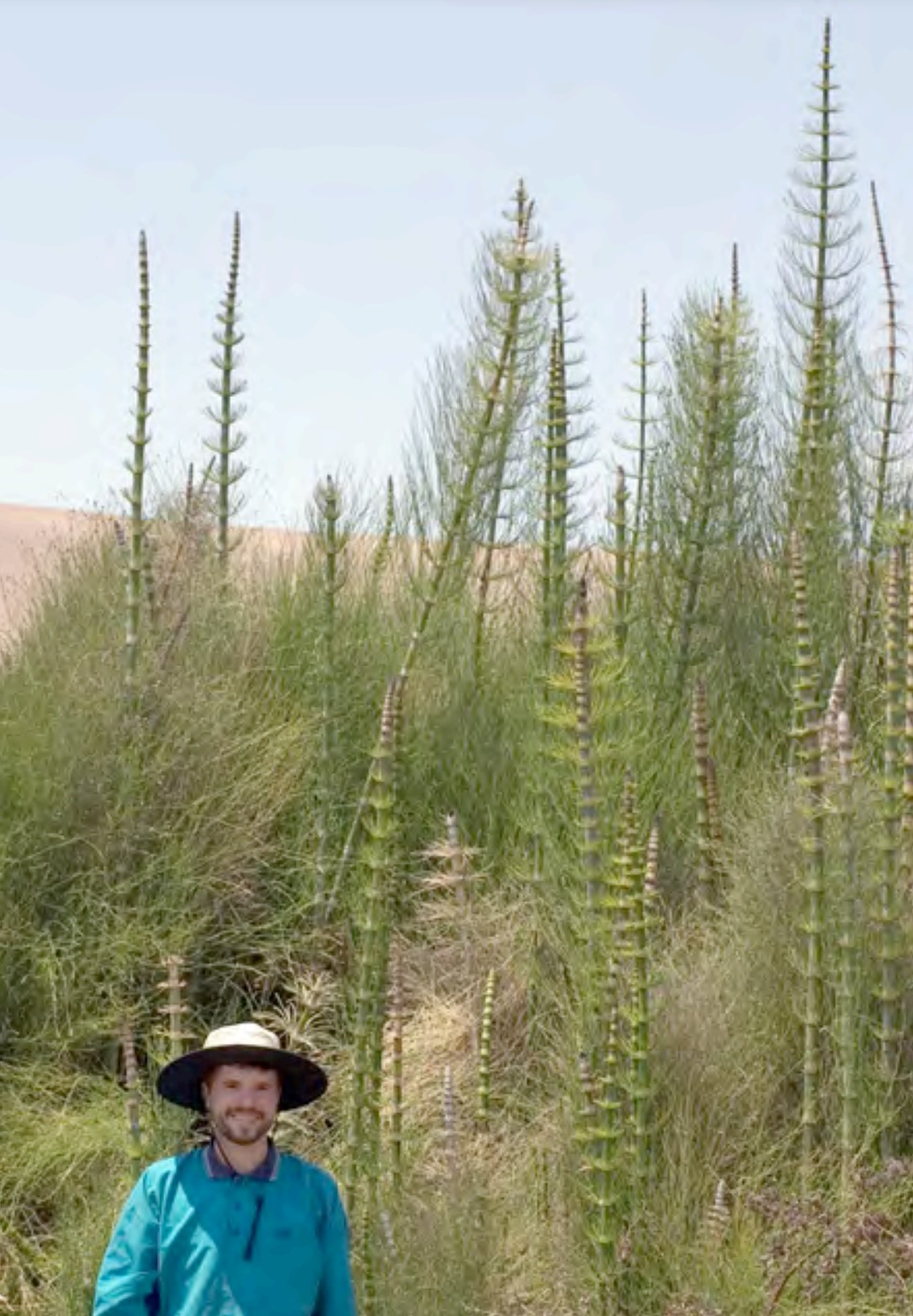
Family?
Equisetaceae
100
New cards
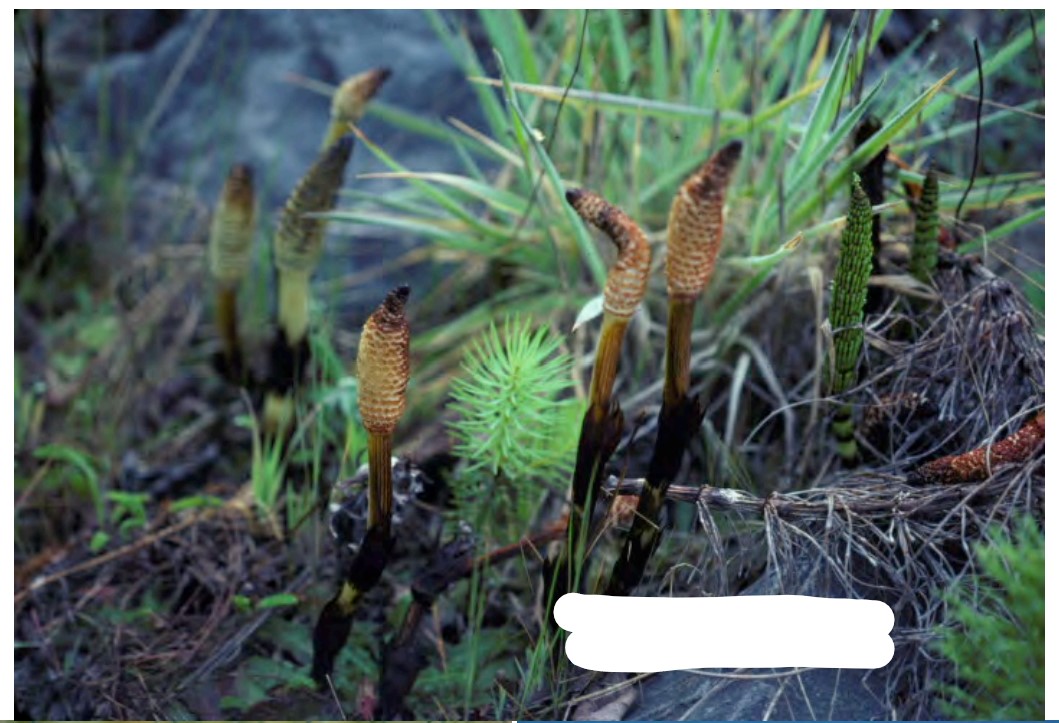
Family?
Equisetaceae